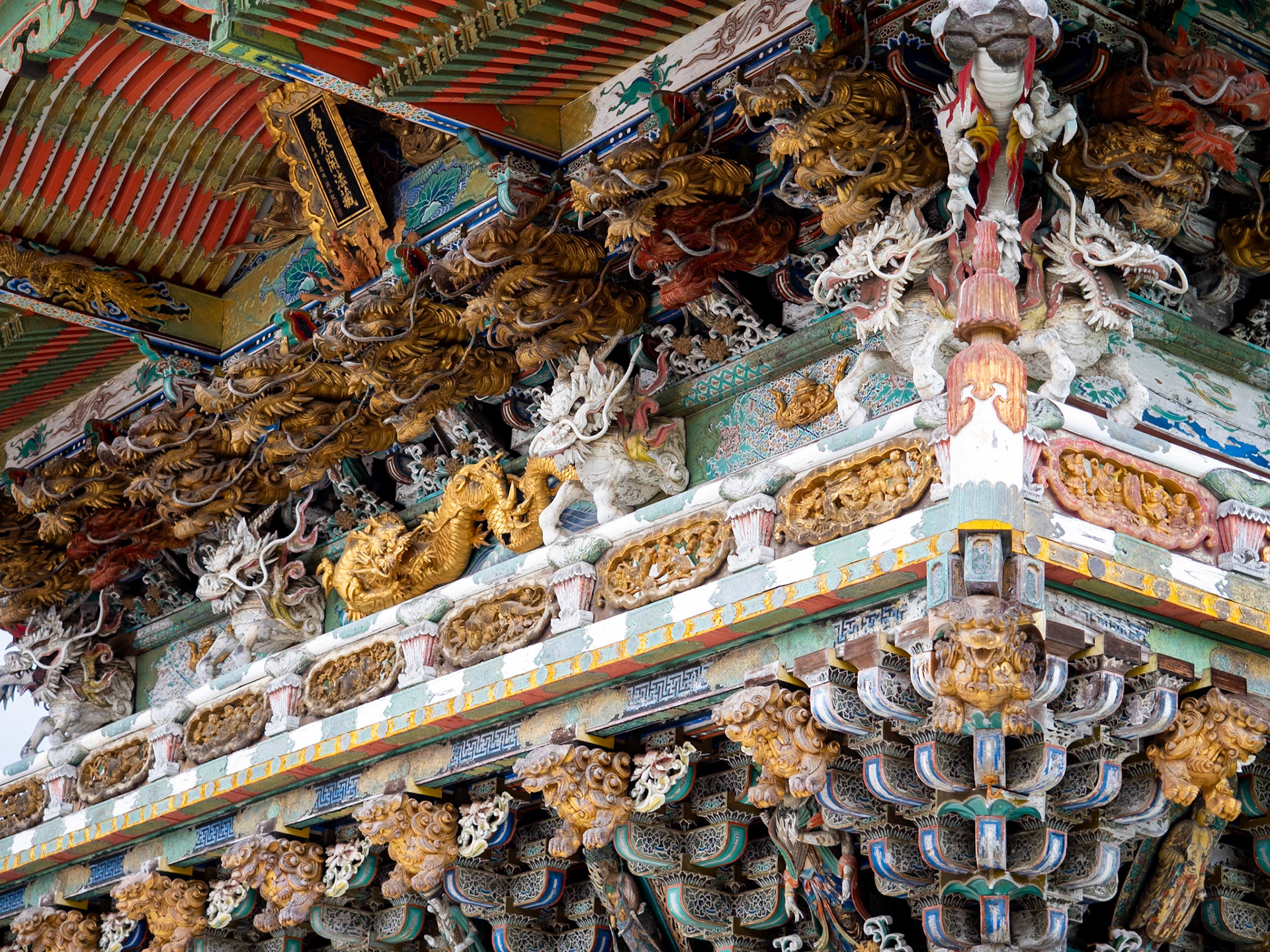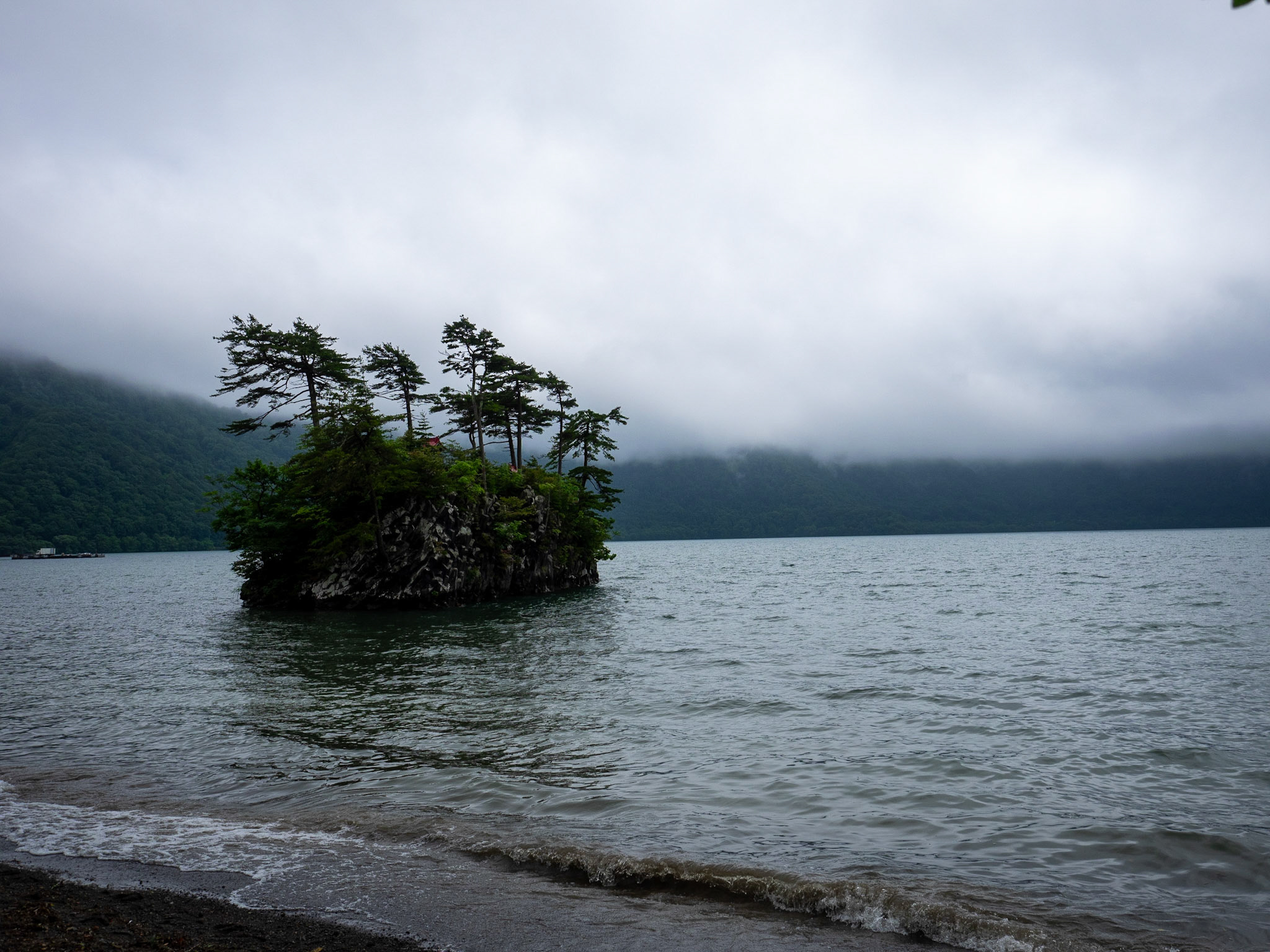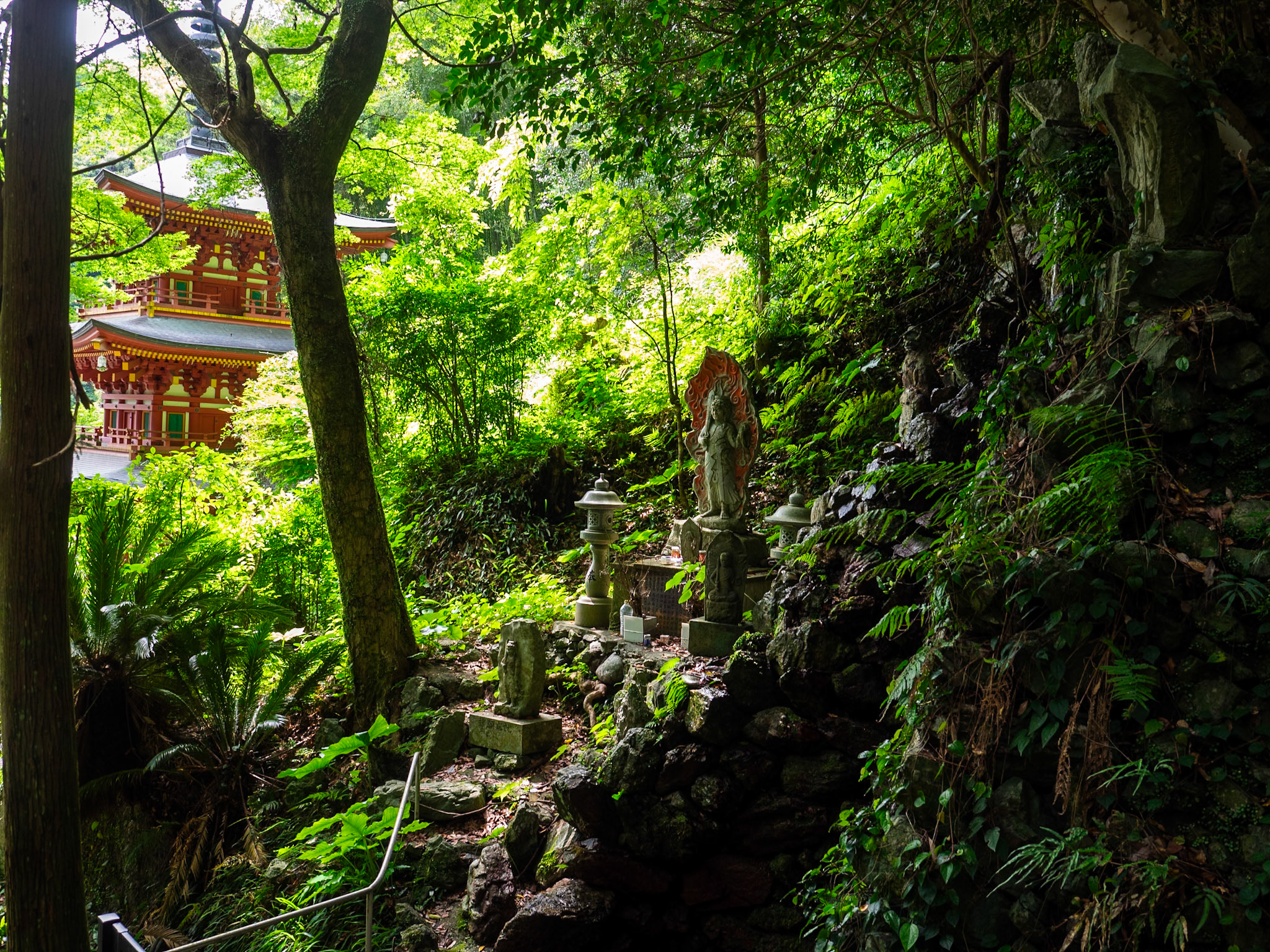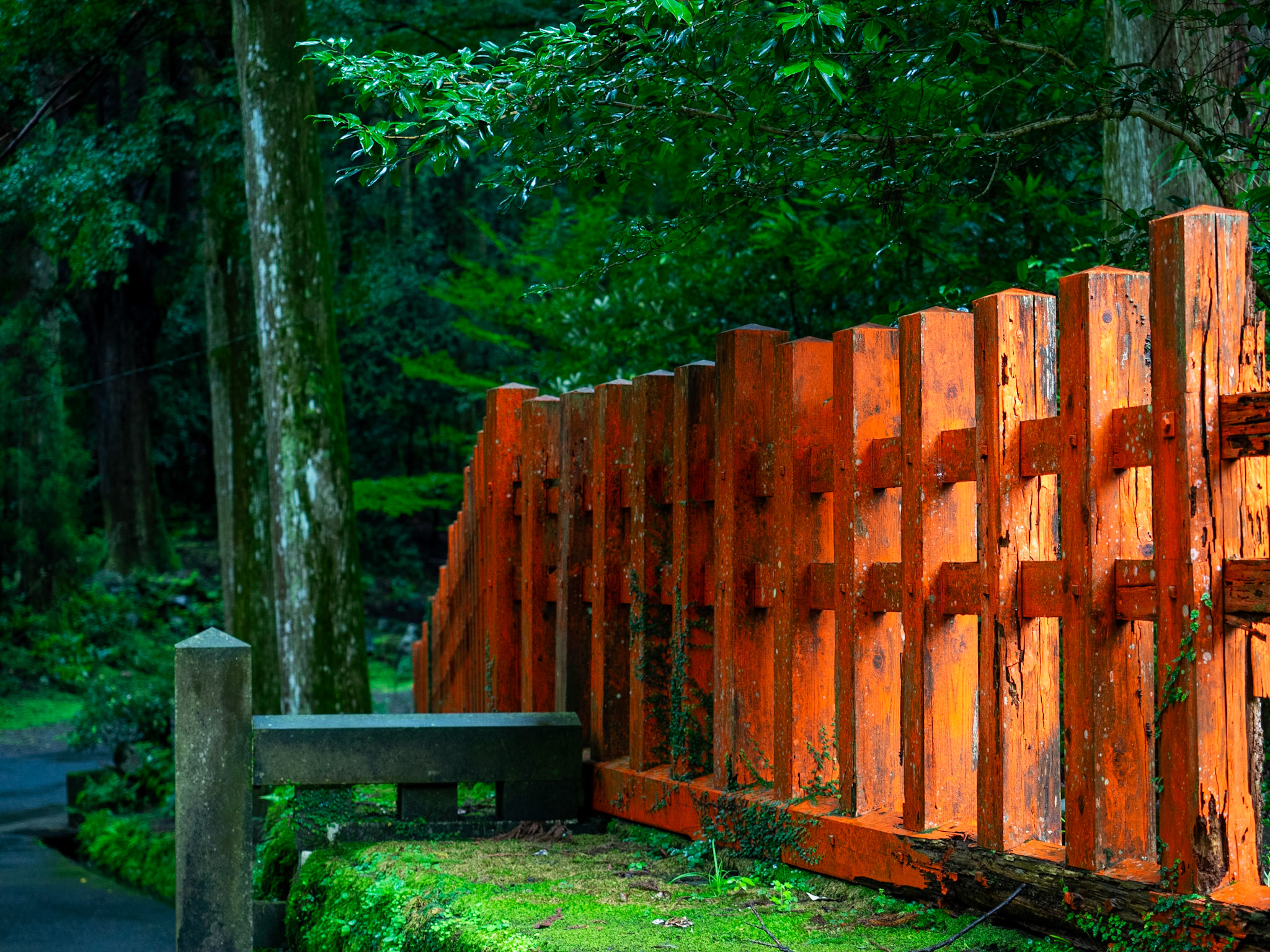Japan
2008, 2023, 2024
There are thousands of blogs, web sites, and resources to deal with traveling in Japan. However if you you want to go further than Tokyo, Kyoto, and Osaka - and you should - this cuts out 90% of the available stuff.
This page is about some places in Central & Southern Honshu outside of the 'Big Three'
Matsue & The Shimane Region
On the west coast of Honshu, Matsue is an excellent base for some great sights.
Matsue sits on the shores of Lake Shinji, an enormous brackish lake, and has a castle, a small samurai district, and several onsens, both on the northern shores, and on the southern side of the lake outside town. Though relatively rarely visited by non-Japanese tourists, this part of the country is well set up for travelling thanks to domestic tourism. There is even a small, newly renovated, pedestrian eating street over Matsue Bridge to the north. Though for a taste of the excellent local food specialities it's hard to beat a splurge on the superb kaiseki dinners at the historic Minamikan Ryokan in the same area.
The train ride from Okayama to Matsue is one of the best scenic train trips in Japan, easily rivaling the more famous Hida Wide View train trip across the central alps via Takayama.
Outside of Matsue, to the west, about an hours drive along the shore of Lake Shinji then beyond, is Izumo Ōyashiro, sometimes called Izumo-taisha.
This is one of the oldest and most revered Shinto shrines in Japan. To such an extent that once a year all the Shinto gods gather there for a party. Notable for it's enormous shimenawa, or woven ropes, both on a newer reception hall, and on the much older main shrine, and set in the usual Shinto forested surrounds & woodland, this is a remarkable place to visit.
Further on to the west, another 20 minutes or so by car, is the start of a remarkably scenic drive along the coast of the Shimane Peninsula. Twisting hairpin bends & tunnels run alongside rocky cliffs and outcrops, punctuated by numerous small fishing coves and villages.
The Hinomasaki Shrine is well worth a stop here, with it's vermilion timbers & ancient pines some 50 metres from the sea. Further along is the Izumo Hinomisaki Lighthouse, perched on it's headland as part of a network of nature trails & birdwatching sites. According to a National Parks information board, it's apparently possible to continue this driving circuit around the coast past historic small towns, and back towards Matsue. Though we didn't take this option due to lack of time. Had we known I would have specifically planned for it, such was the beauty of the area.
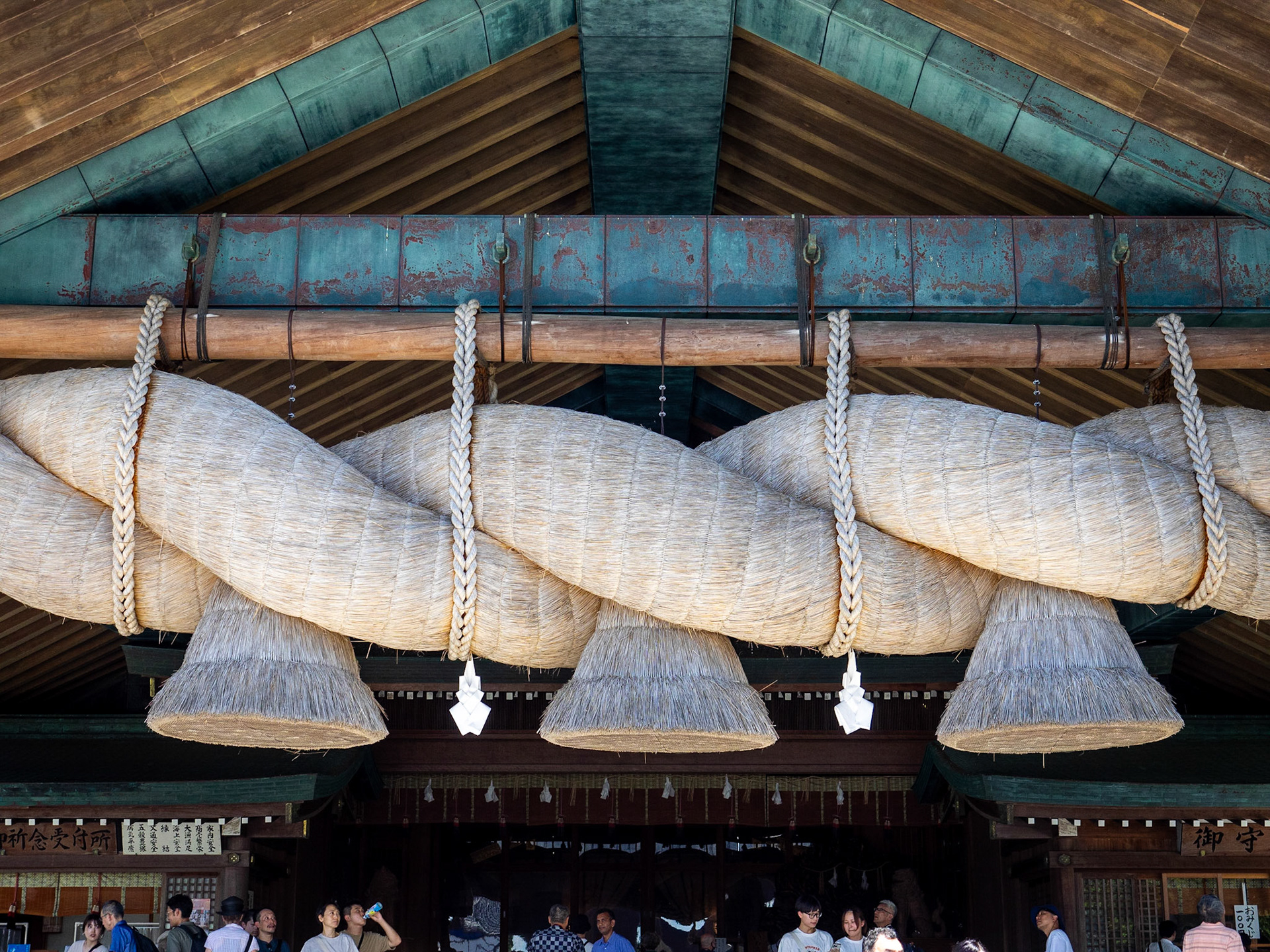
Izumo Ōyashiro
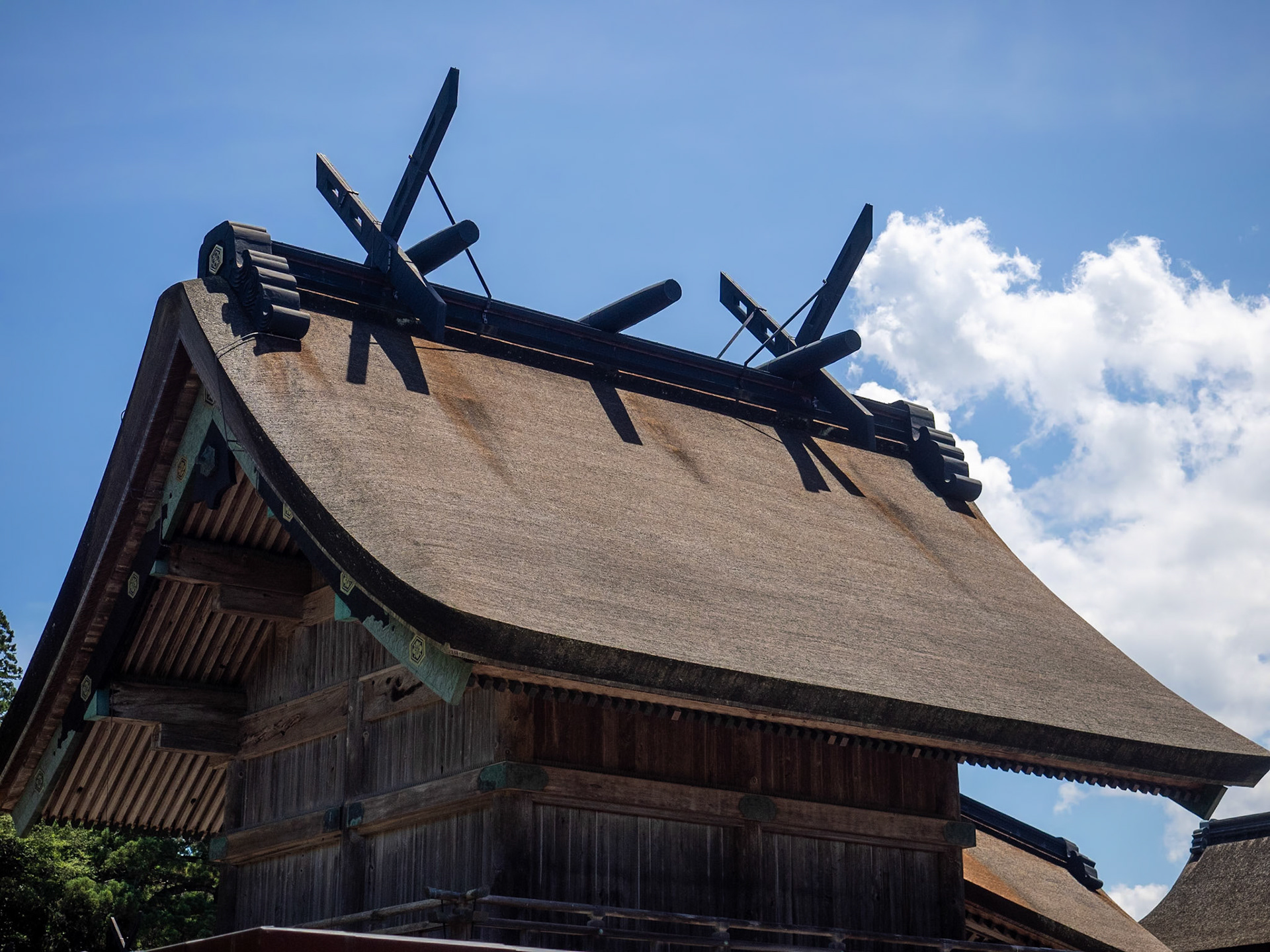
Izumo Ōyashiro
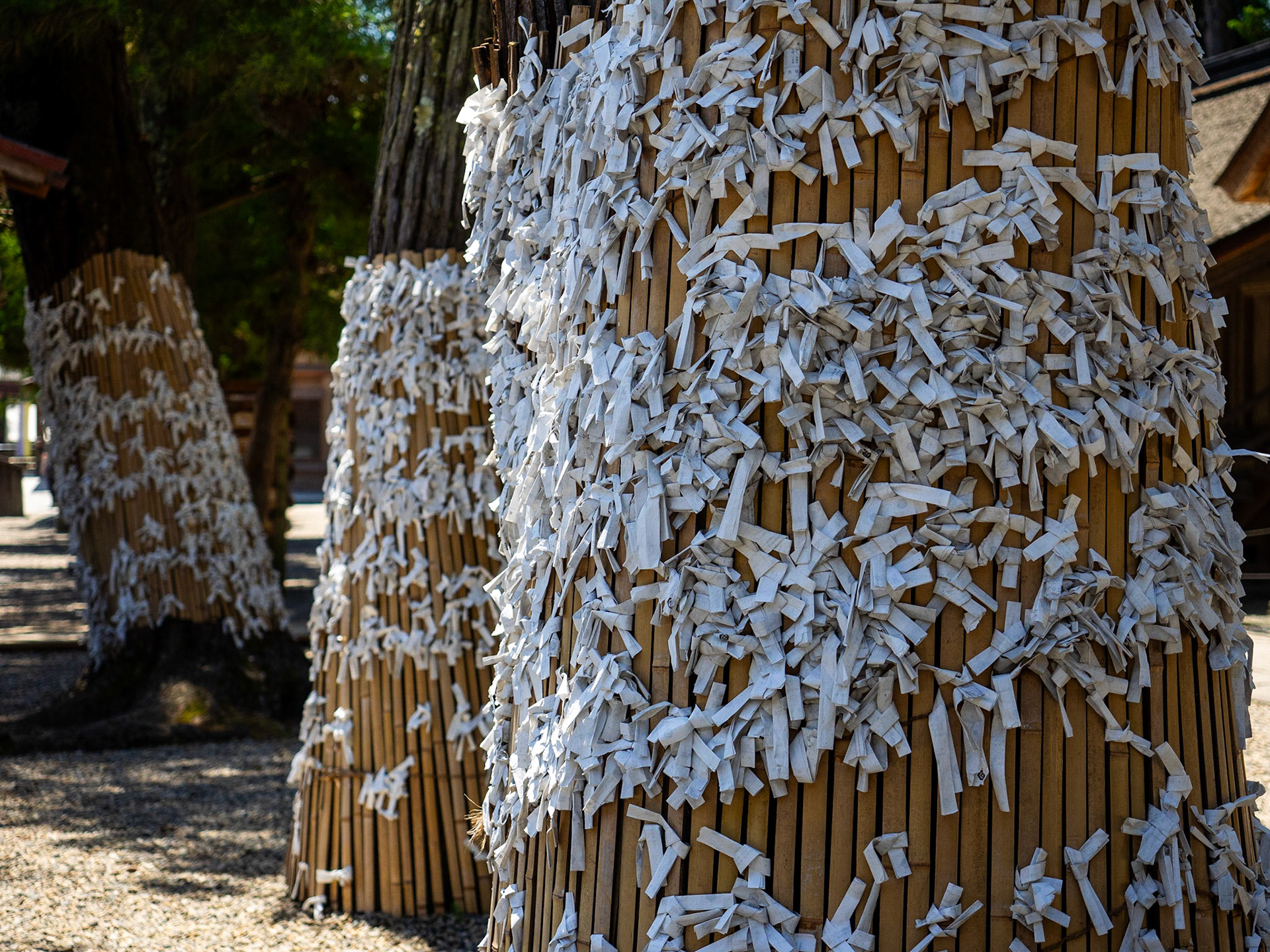
Izumo Ōyashiro
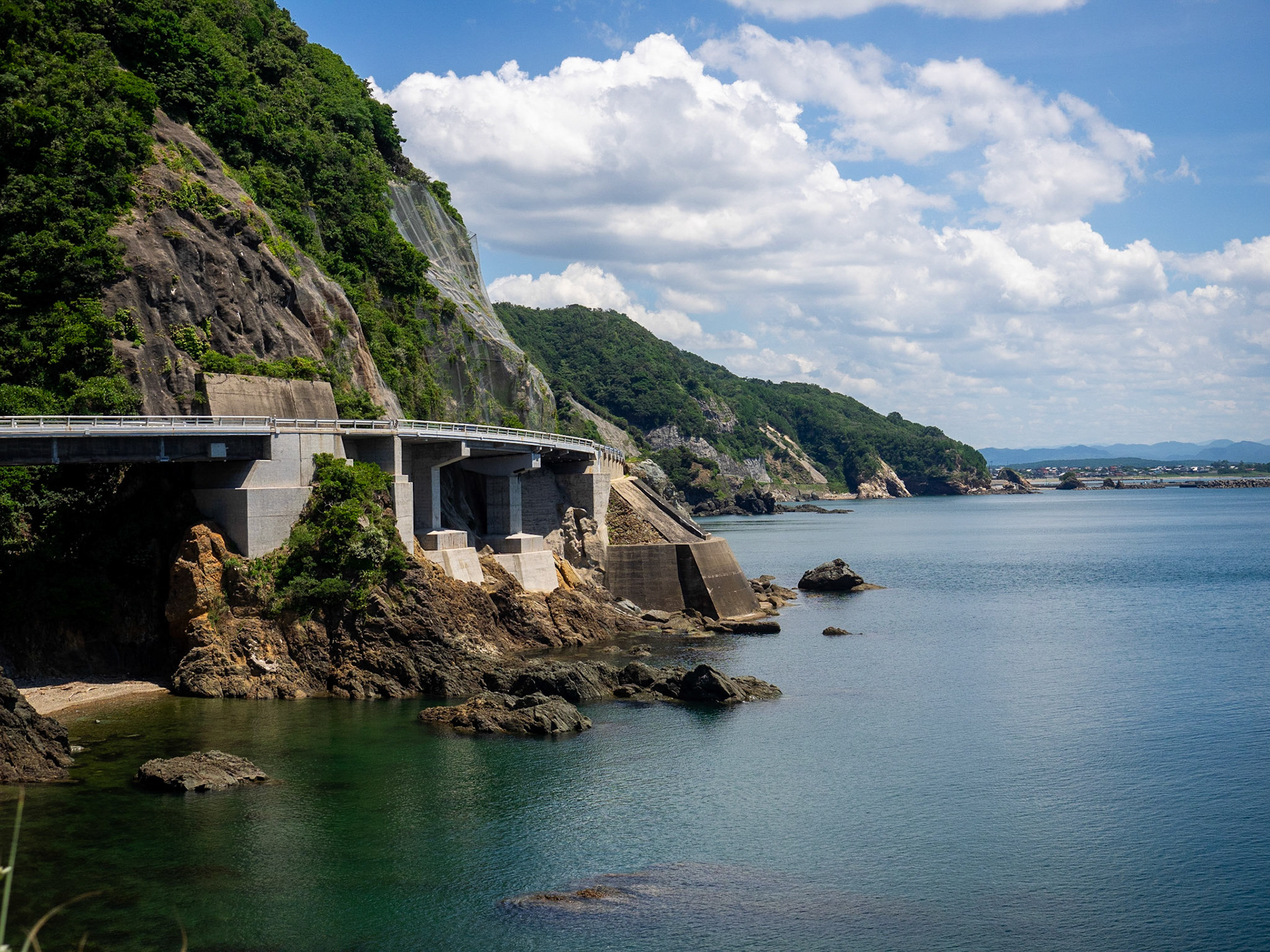
Shimane Peninsula
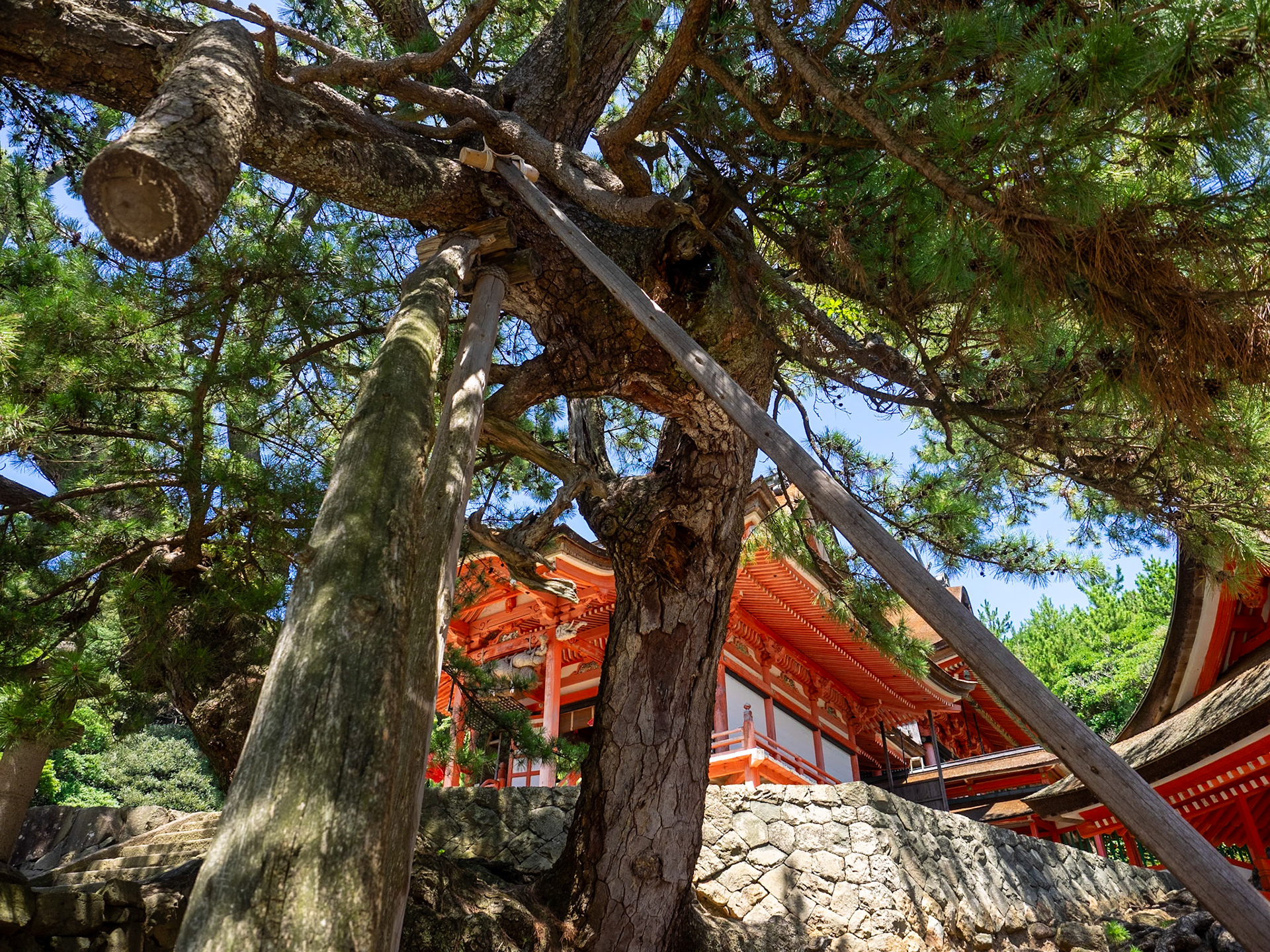
Hinomasaki Shrine, Shimane Peninsula
To the east of Matsue lie another group of worthwhile sights.
The Adachi Museum of Art is famous for it's gardens, regularly voted the best in Japan. Oddly you are not permitted to actually enter these gardens, but view them from inside the Museum buildings. So in a sense these are a meta idea of a Japanese viewing garden, and as such are pretty without being great. Though the sight of the distant waterfall, artificially created in the distance across a main road, on land specially purchased for the purpose, is a good summation of the ambition & the potential kitsch of the enterprise. A similar thing could be said of Mr Ando's extensive art collection - some worthy ceramics and craft pieces, a mixed bag of ink works and mid 20th century paintings, some more interesting recent art works, and some truly awful illustrations of saucer eyed children and kittens.
For a much more immersive garden experience, the gardens at Yuushien, on an island in Shimanes' second huge lake, are the go. Distinctly an actual commercial nursery, specialising in peonies and ginseng, these are a different take on the concept of a Japanese garden.
It's easily possible to combine these destinations to the east in a days drive, and possibly some nearby Shinto shrines as well, but note the actual driving time can be lengthy due to large sections being commercial truck routes. Unfortunately I don't have photos of the local chain of hot pink service stations obviously set up to cater for these truckers.
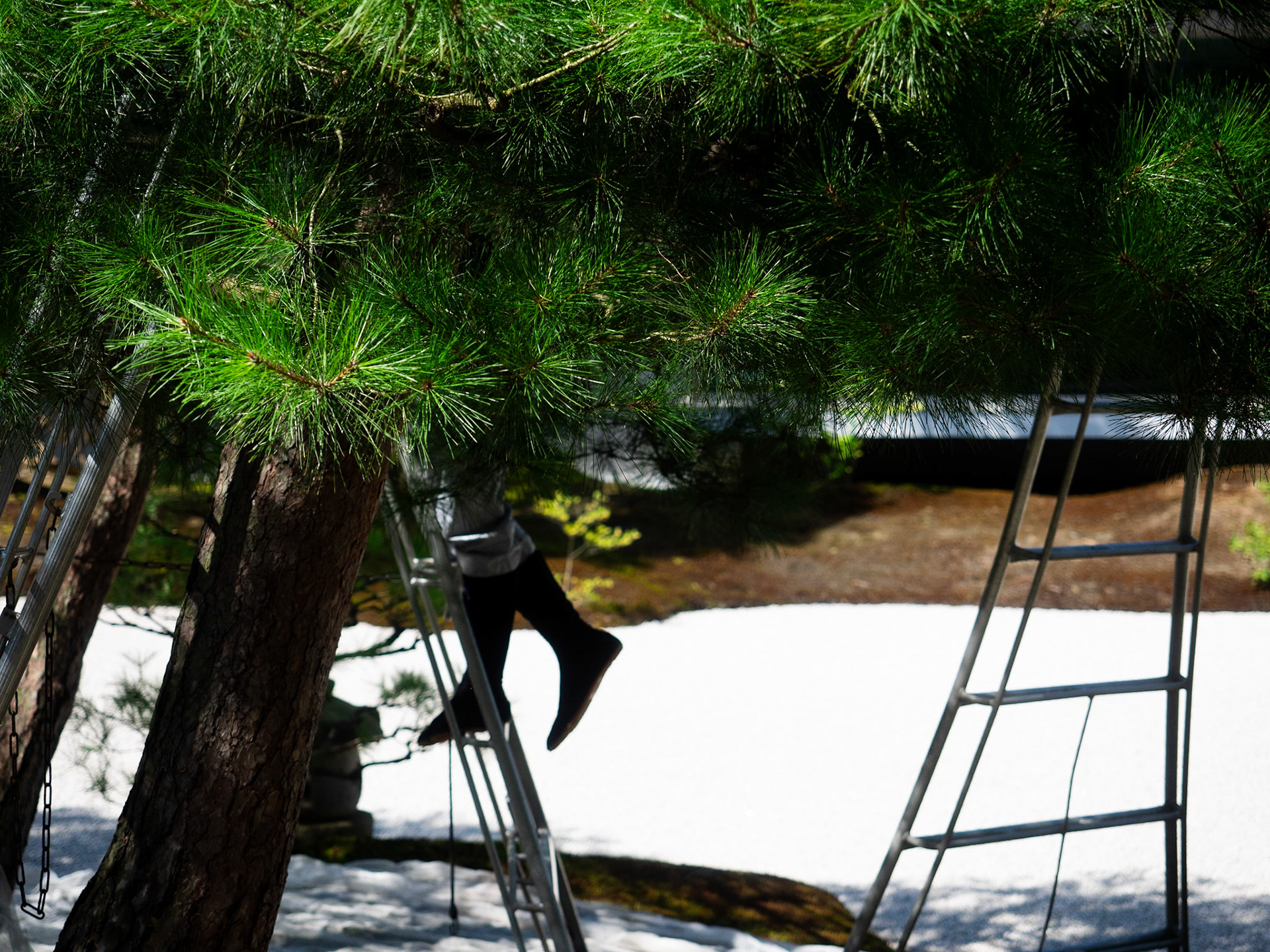
Adachi Museum Gardens
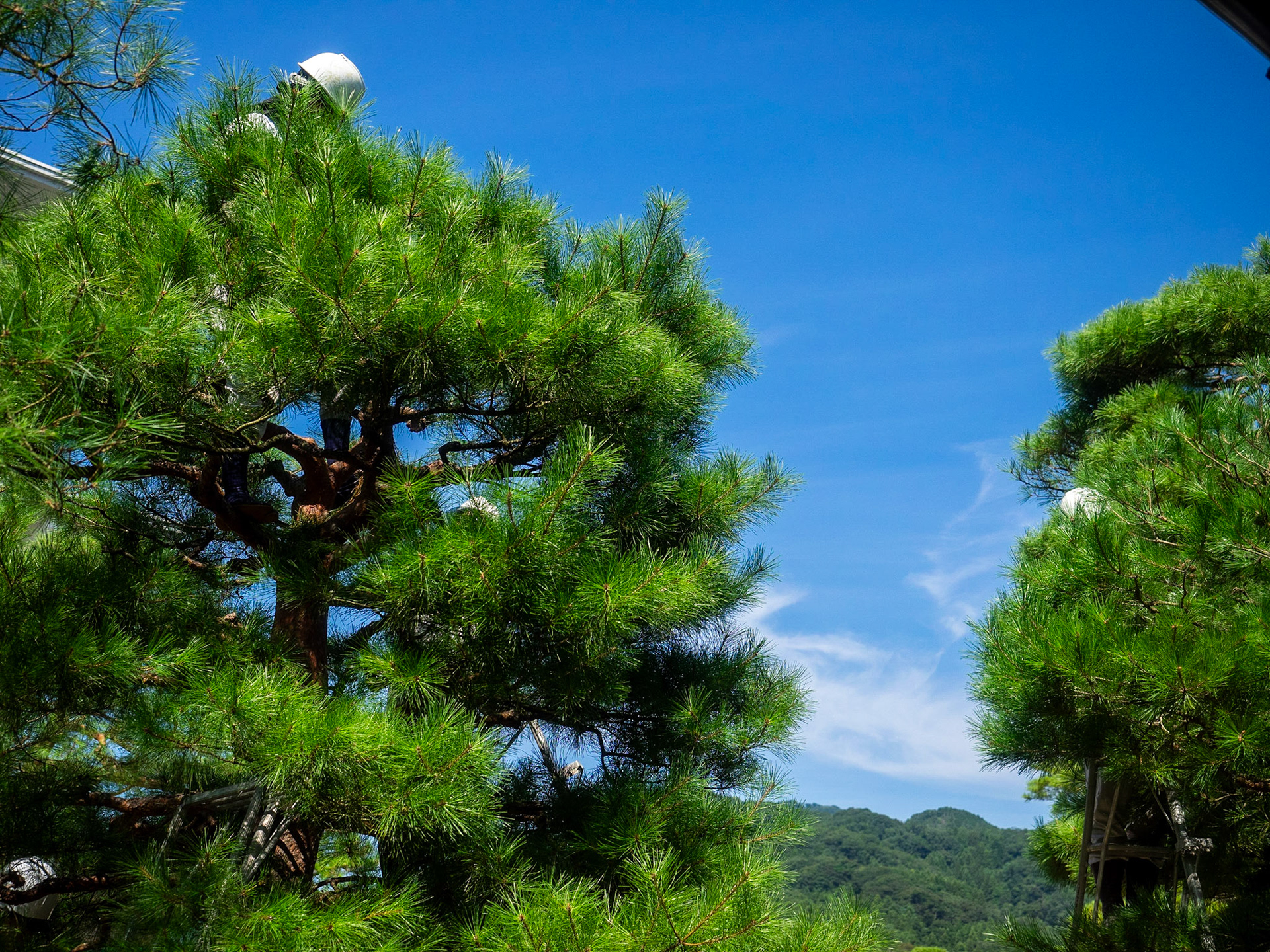
Adachi Museum Gardens
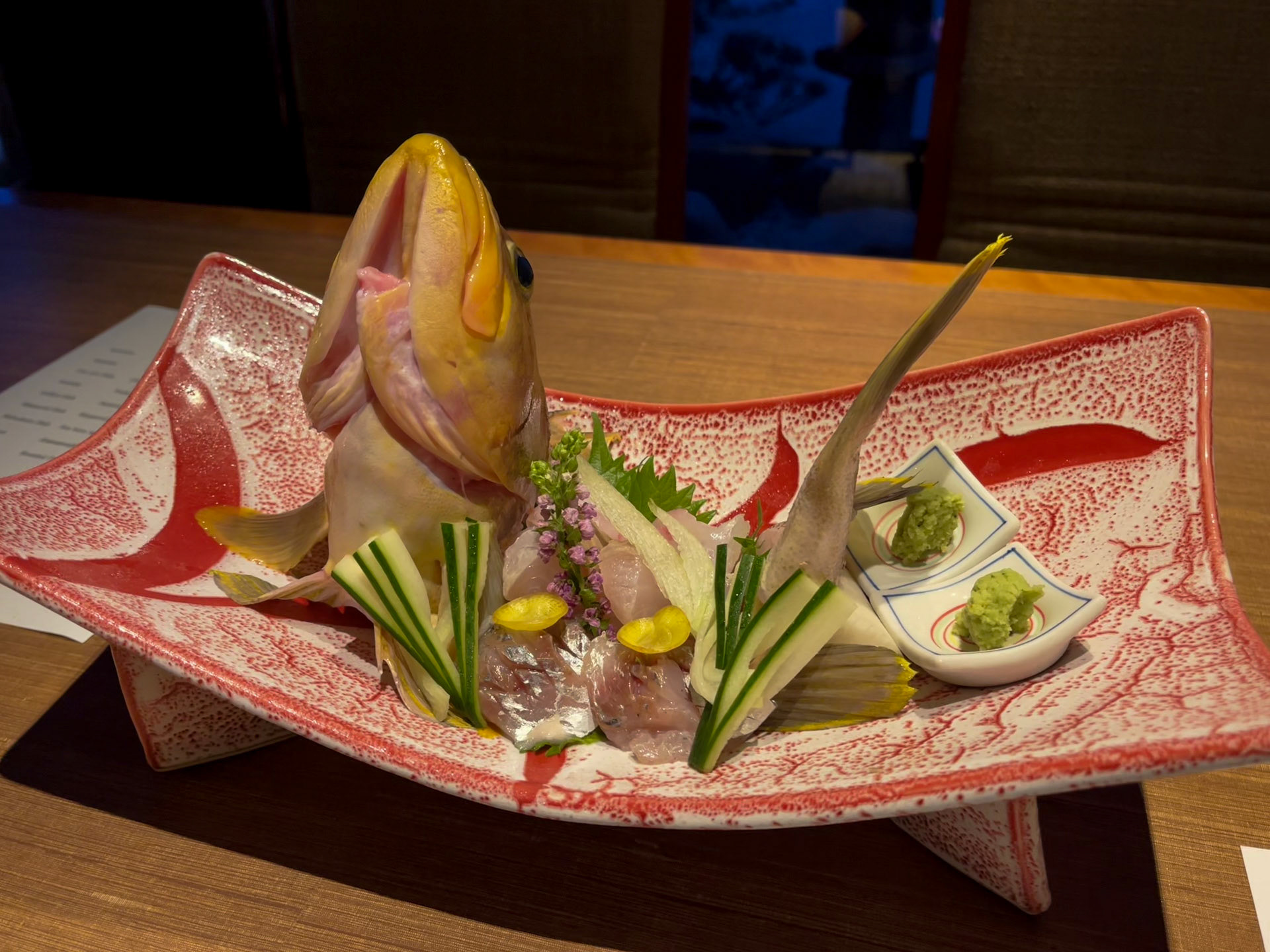
Kaiseki, Matsue
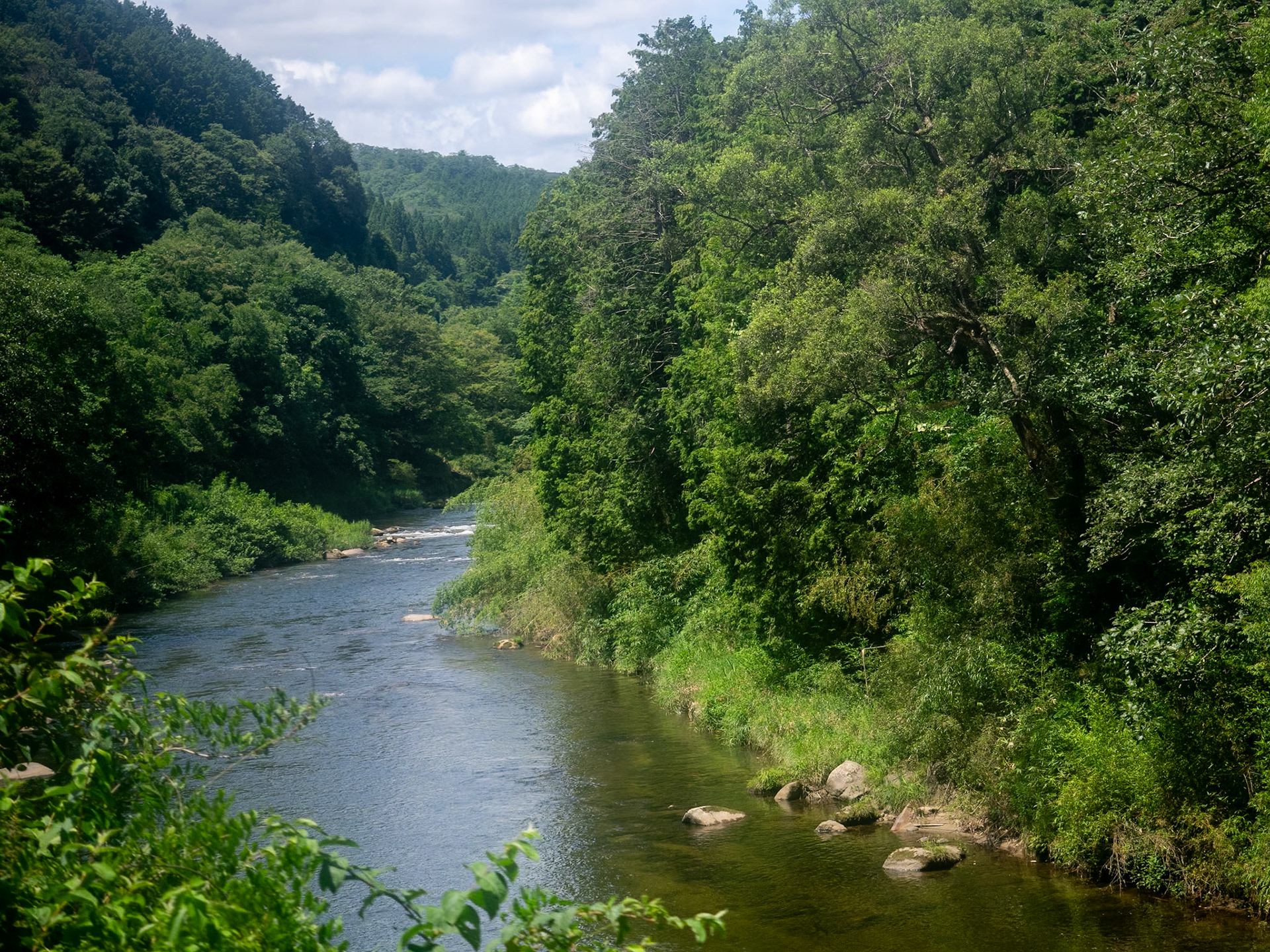
Train between Matsue & Okayama
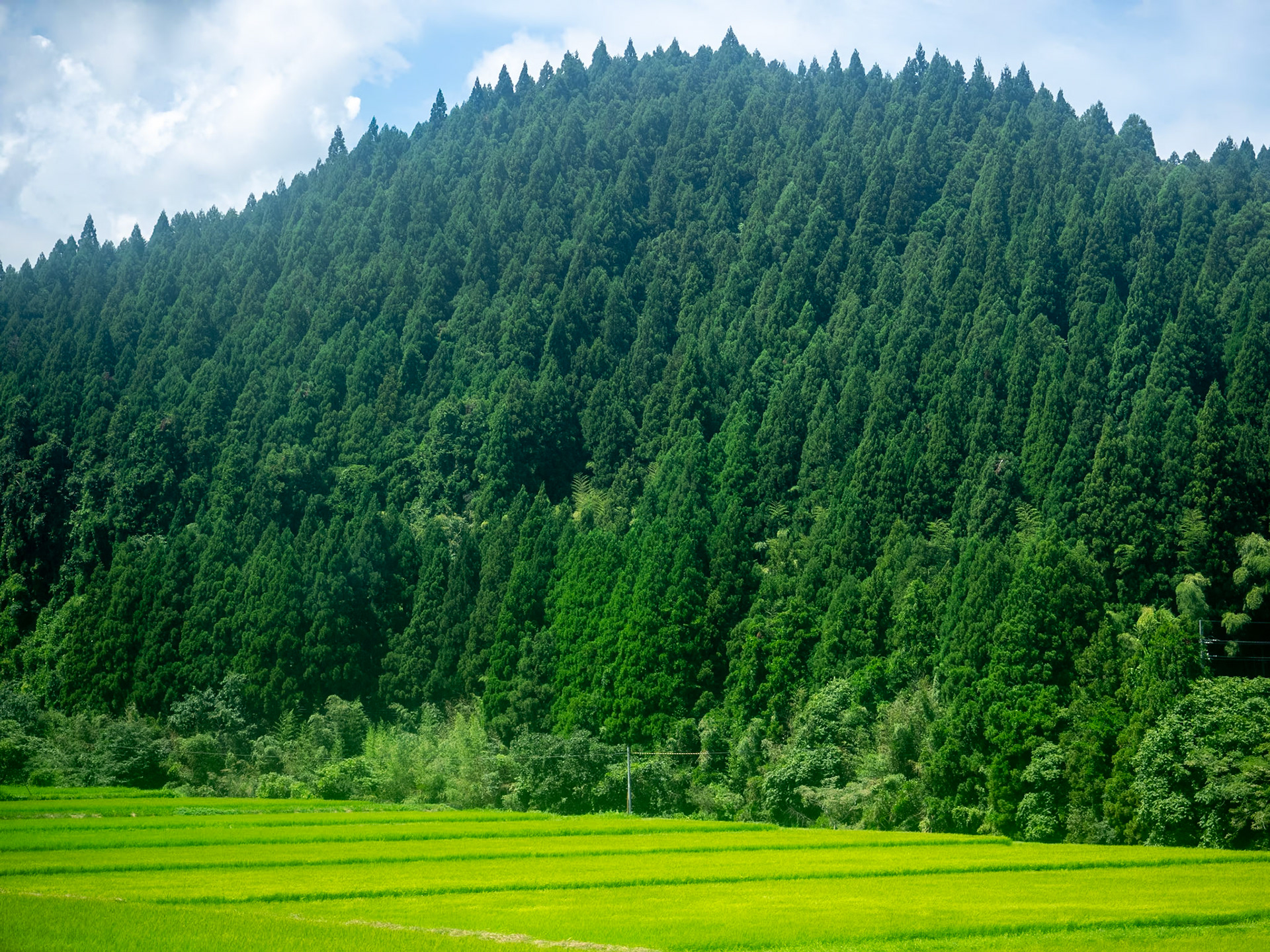
Train between Matsue & Okayama
Kanazawa
Kanazawa, on the west coast of Honshu, regularly features in Japan guides as an add on to the main sights of Tokyo, Kyoto & Osaka. I'd put it instead as a must visit, easily eclipsing Osaka, and possibly neck & neck with Kyoto.
Straightforward to get to by train, though a detour south from Tokyo to take the Hida Wide View option via Takayama is well worth while, Kanazawa has some outstanding things to see and do.
Kenroku-en is genuinely one of the great Japanese gardens. And I've visited a lot of Japanese gardens.
The 21st Century Museum of Contemporary Art has excellent shows from both International & Japanese artists.
Seemingly forgotten, the National Crafts Museum has relocated from Tokyo, and, based on what we saw, has superb themed exhibitions. As far as Japanese crafts goes, even better than the displays at the main Tokyo museums.
If that's not enough, there's a restored castle, an interesting architecture museum, the Yoshiro and Yoshio Taniguchi Museum of Architecture, a really accessible tourist bus circuit, and a great food scene, specialising in seafood, and regional produce, including sake, from the Noto Peninsula.
Speaking of which, the main fish market is also full of lunchtime eating options, and tucked away in the historic samurai district of Naga-Machi, is the Moron Cafe, which served the only genuinely Melbourne level strong coffeee we encountered in two months. Which matters. The railway station also has just about the best selection of ekiben that we came across, so you can even depart Kanazawa happy.
The only possible downside to Kanazawa is that it revels in it's reputation as one of Japan's rainiest cities, so carrying an umbrella is pretty much essential.
One quirk of Kanazawa is that people concerned about the very low birth rate in Japan might be reassured by the numerous vintage prams being pushed around. At least until they realise that these contain dogs of various sizes & ages, in summer often with their own personal mounted cooling fans.
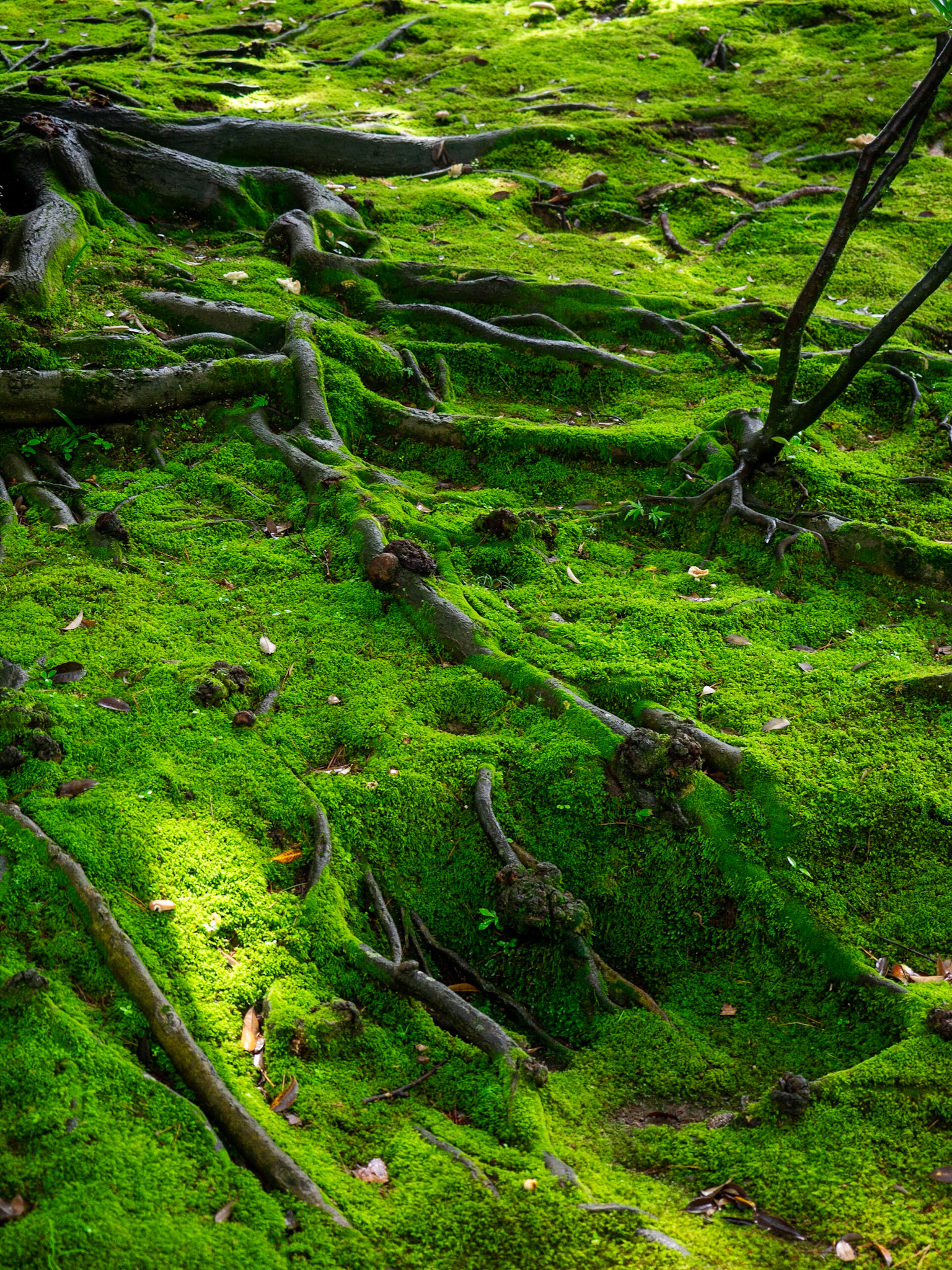
Kenroku-en, Kanazawa
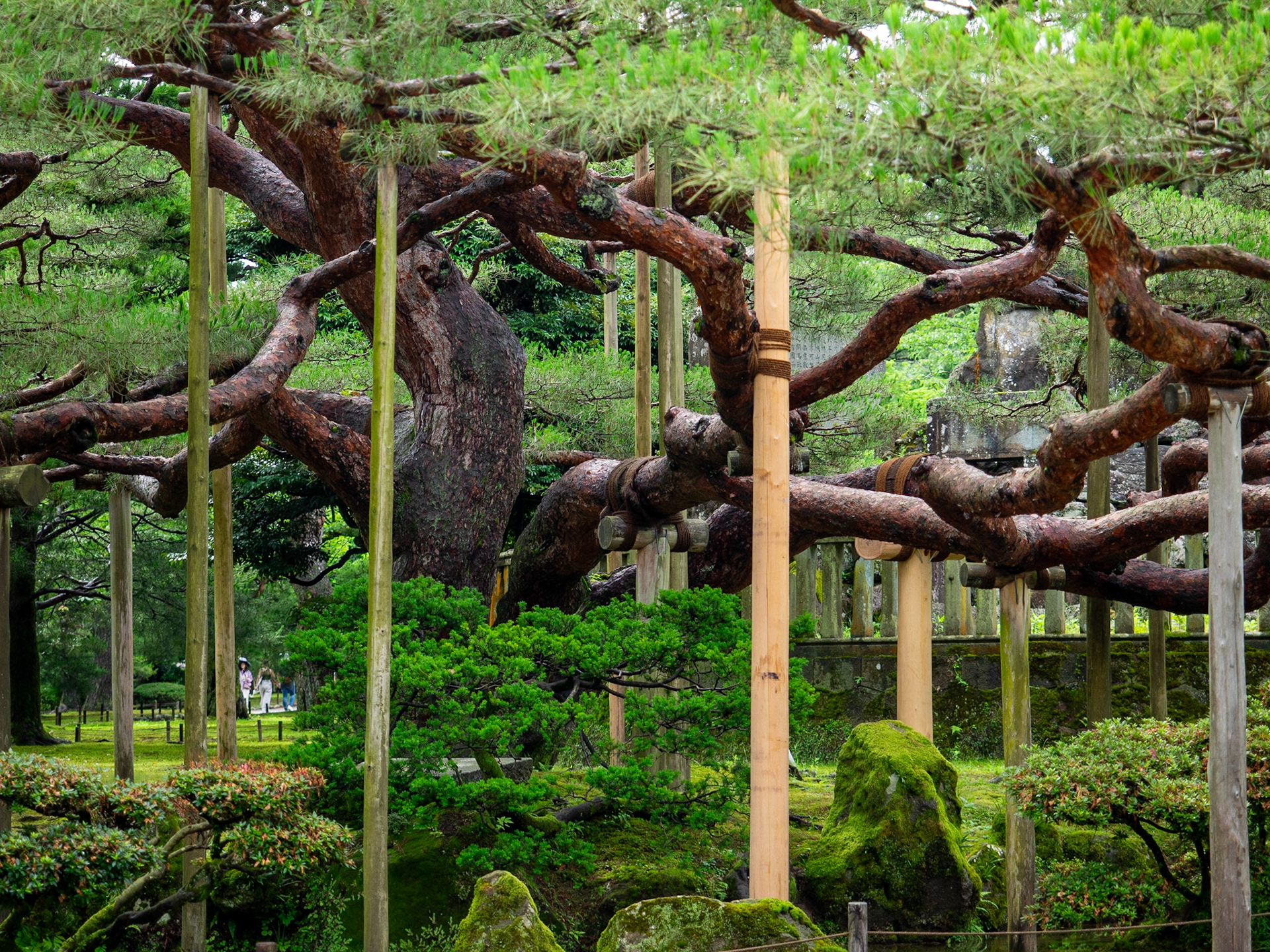
Kenroku-en, Kanazawa
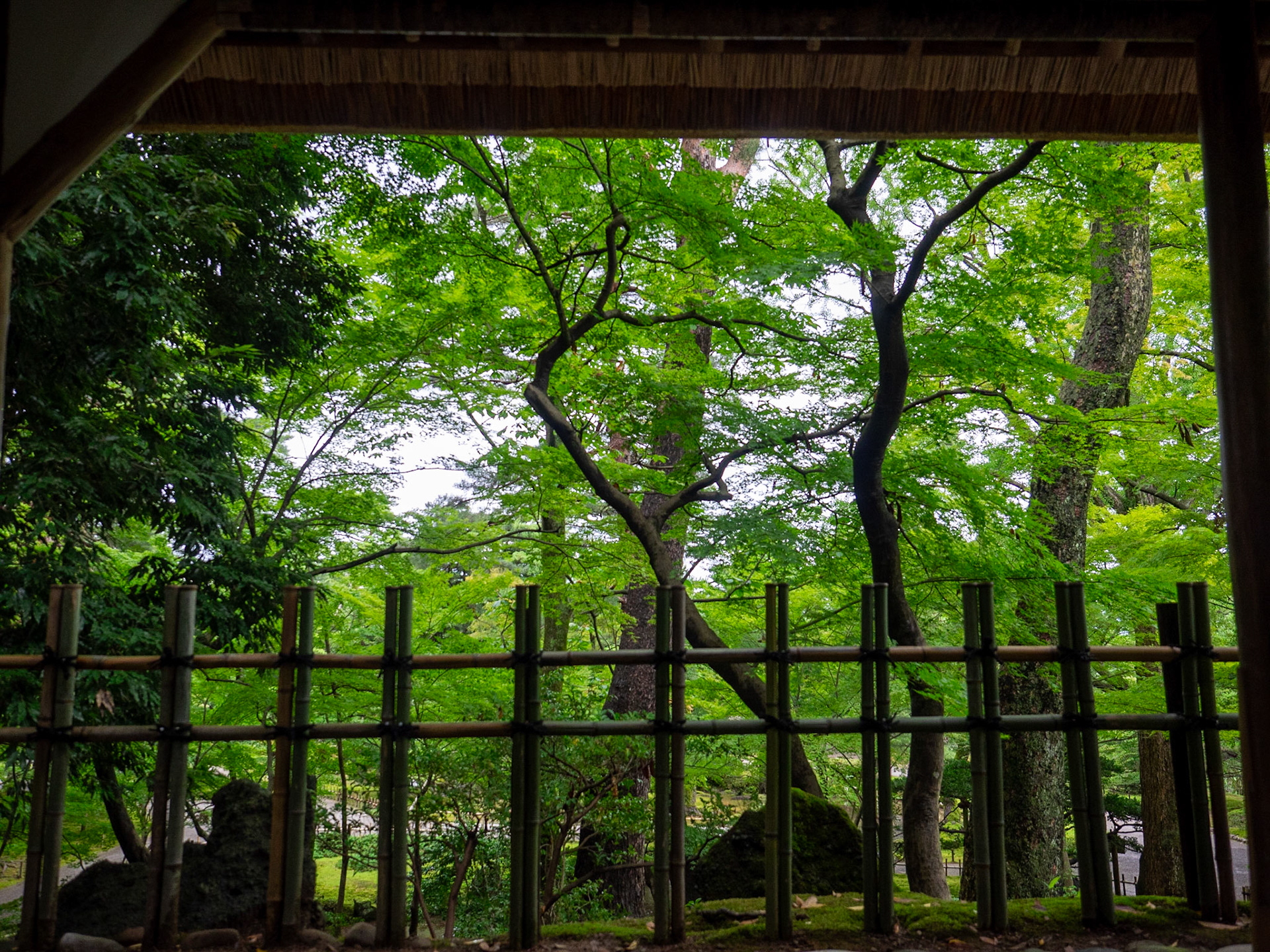
Kenroku-en, Kanazawa
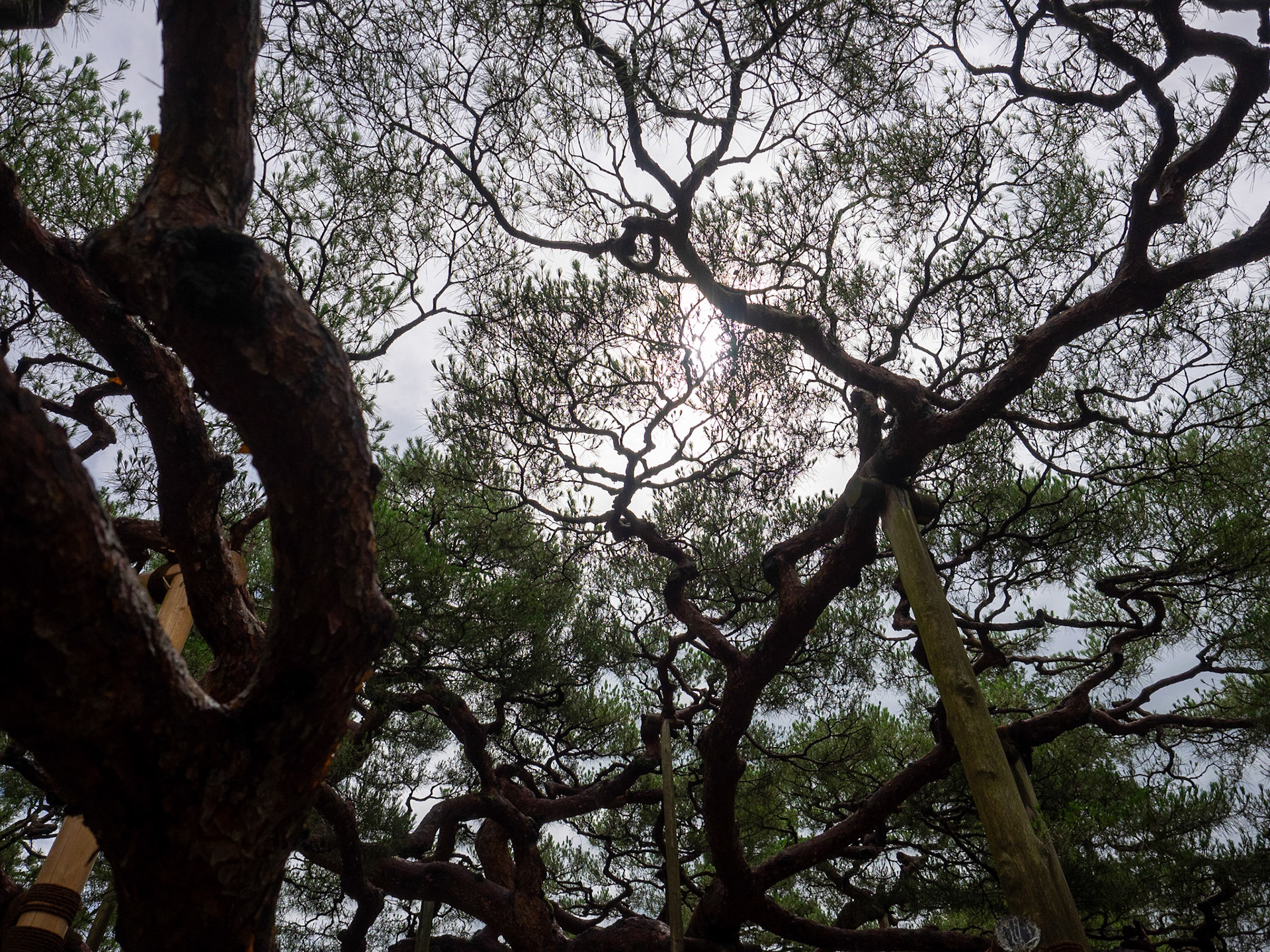
Kenroku-en, Kanazawa
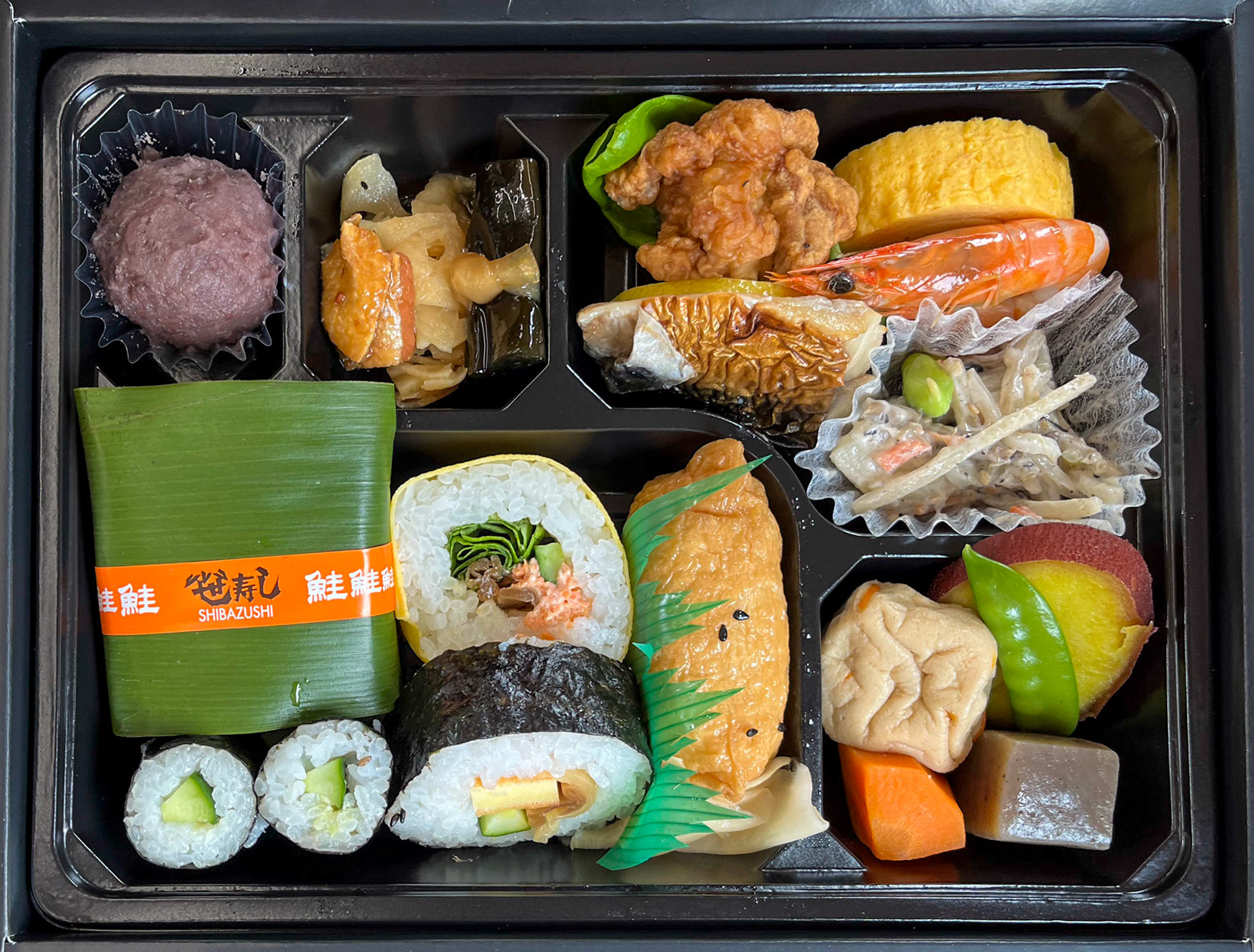
Ekiben, Kanazawa
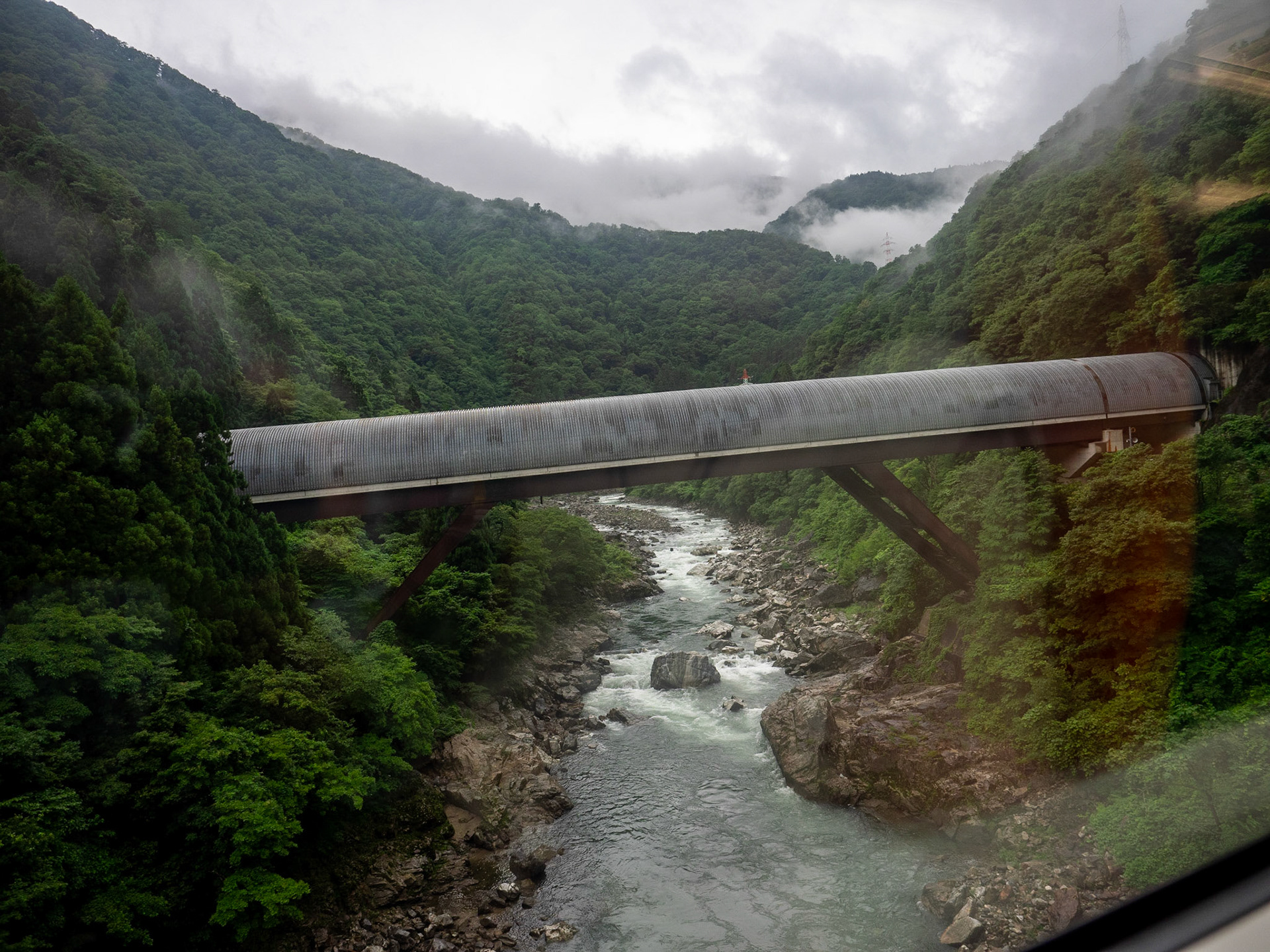
Train between Takayama & Kanazawa
Wakayama & Mount Koya
Wakayama is a small, sleepy city to the south of Osaka. Easily reached from Osaka by local train, Wakayama has some quintessentially Japanese attractions, and makes a very good base for a day trip by car to Mount Koya.
Wakayama itself has a picturesque castle, better seen from a distance, surrounded by quite small historic gardens. Back in the day Wakayama was a bit of a resort town, famous for it's fresh seafood & beaches. Nowadays it's most famous attraction is the Cat Train.
This is a short, uber local, line of some 14 kms, with various themed trains running between Wakayama Station and Kishi Station. Kishi Station is where you'll find the small shrine dedicated to Grand Stationmaster Tama, the cat who is credited with saving the railway thanks to his popularity. Kishi is now the main home of Tama II, and his eventual successor, Tama III. There are different trains, two original 'Cat Trains", a 'Strawberry Train', an 'Umeboshi Train', and, for an absolutely over the top experience, the newly introduced 'Tama Museum Train'. A day ticket allows you to hop on & hop off at stations along the route - there are some shrines and temples worth a quick look near several stations - and therefore catch a range of these trains.
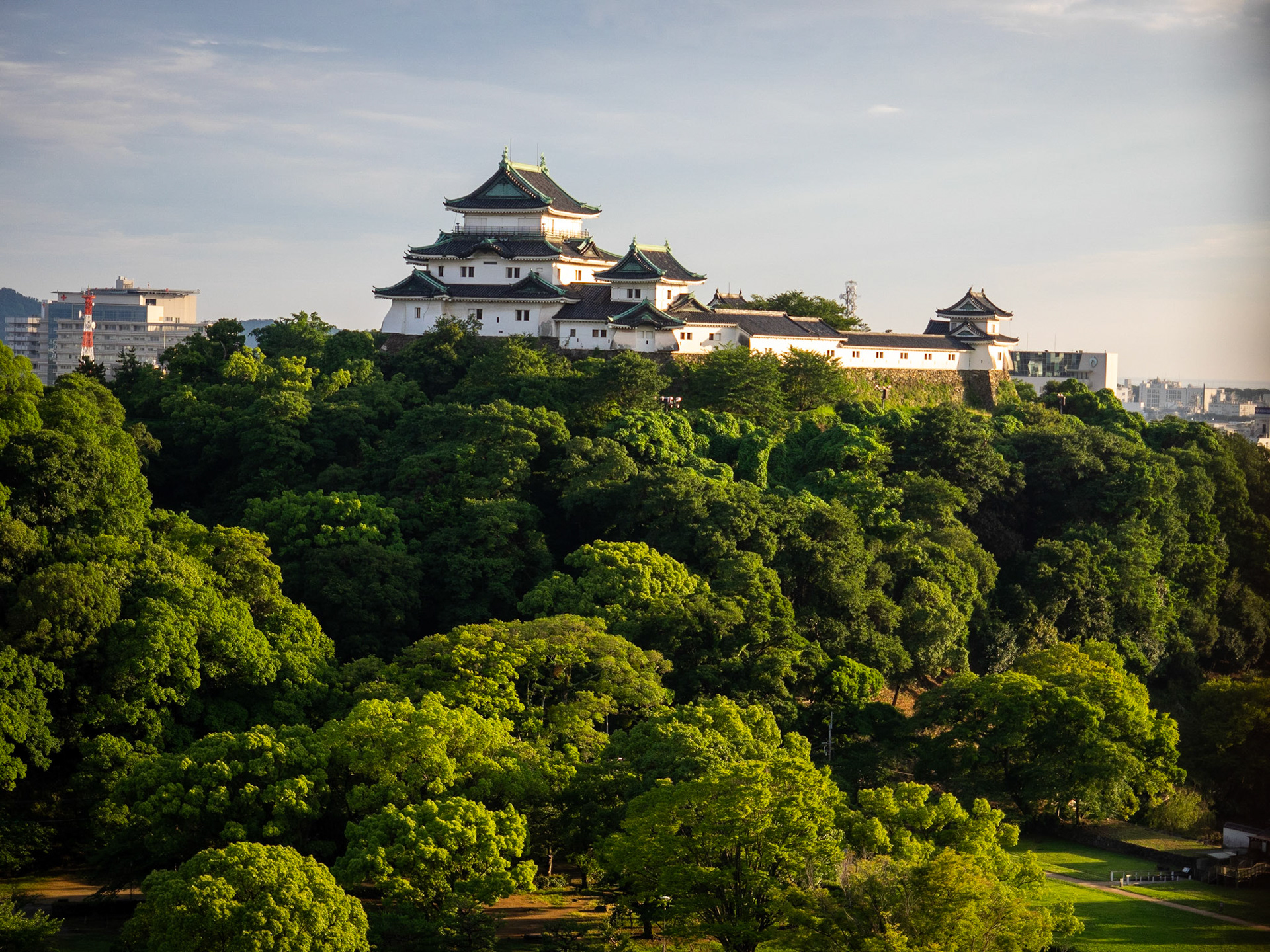
Wakayama Castle
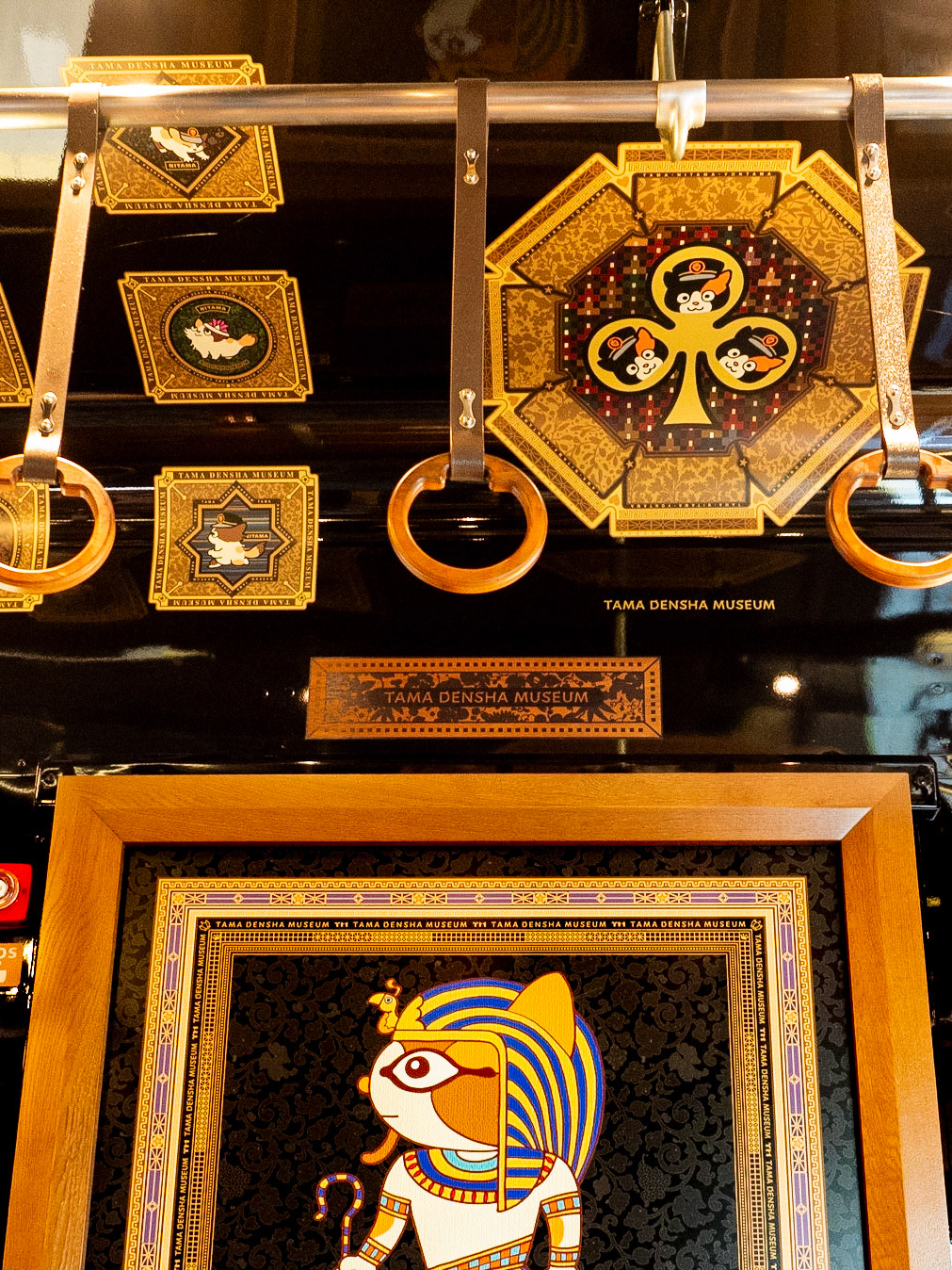
Tama Museum Train, Wakayama
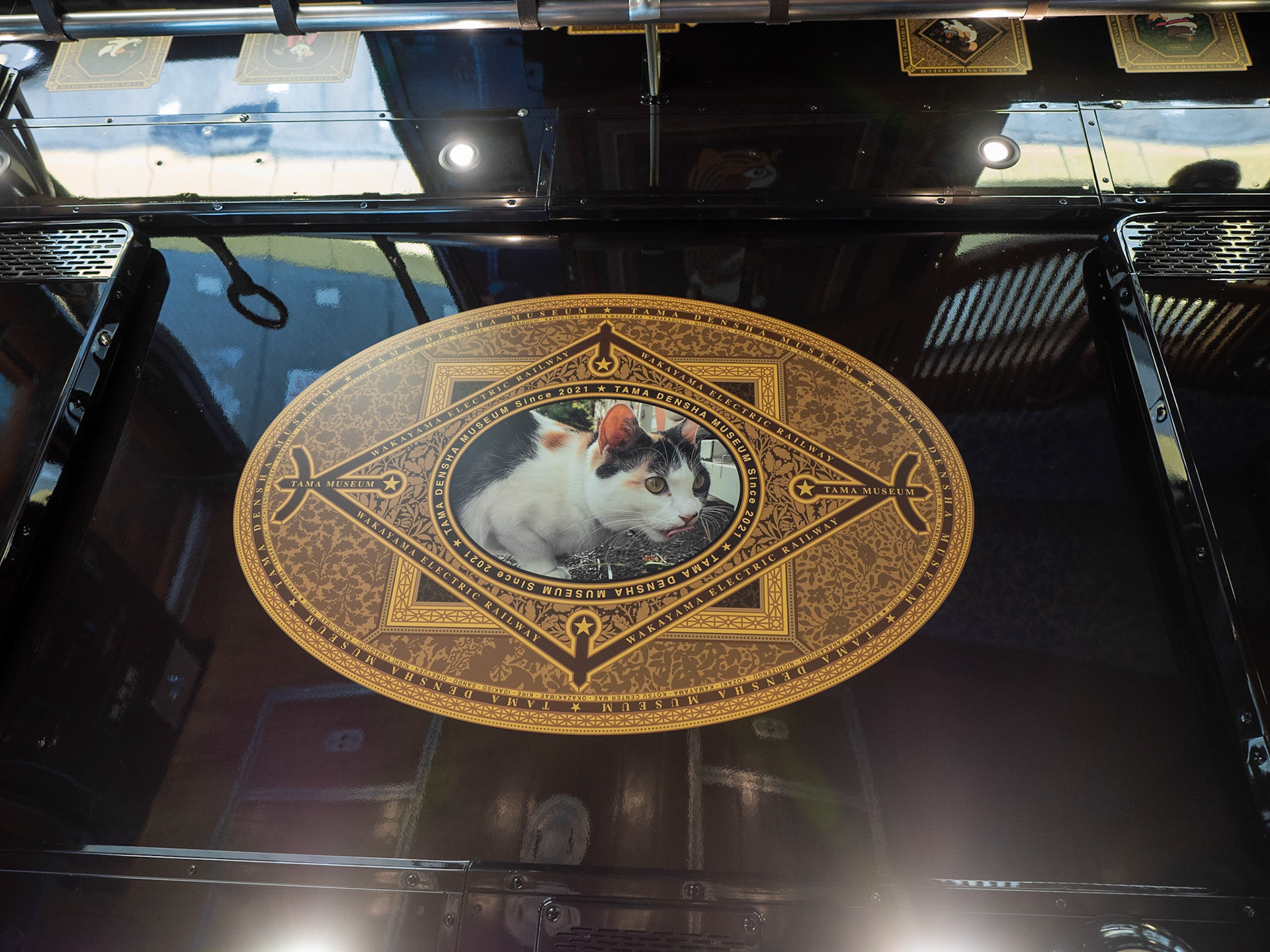
Tama Museum Train, Wakayama
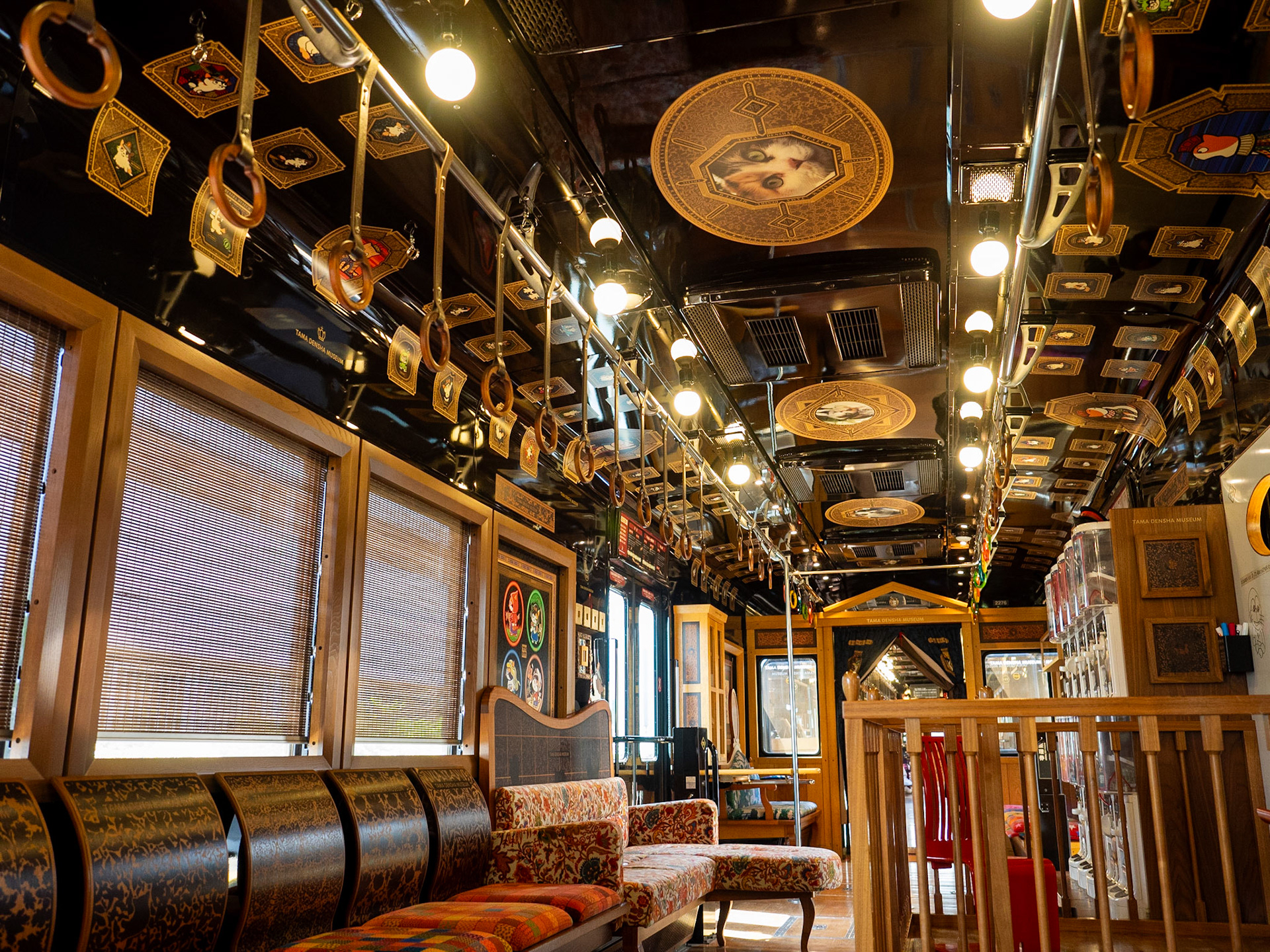
Tama Museum Train, Wakayama
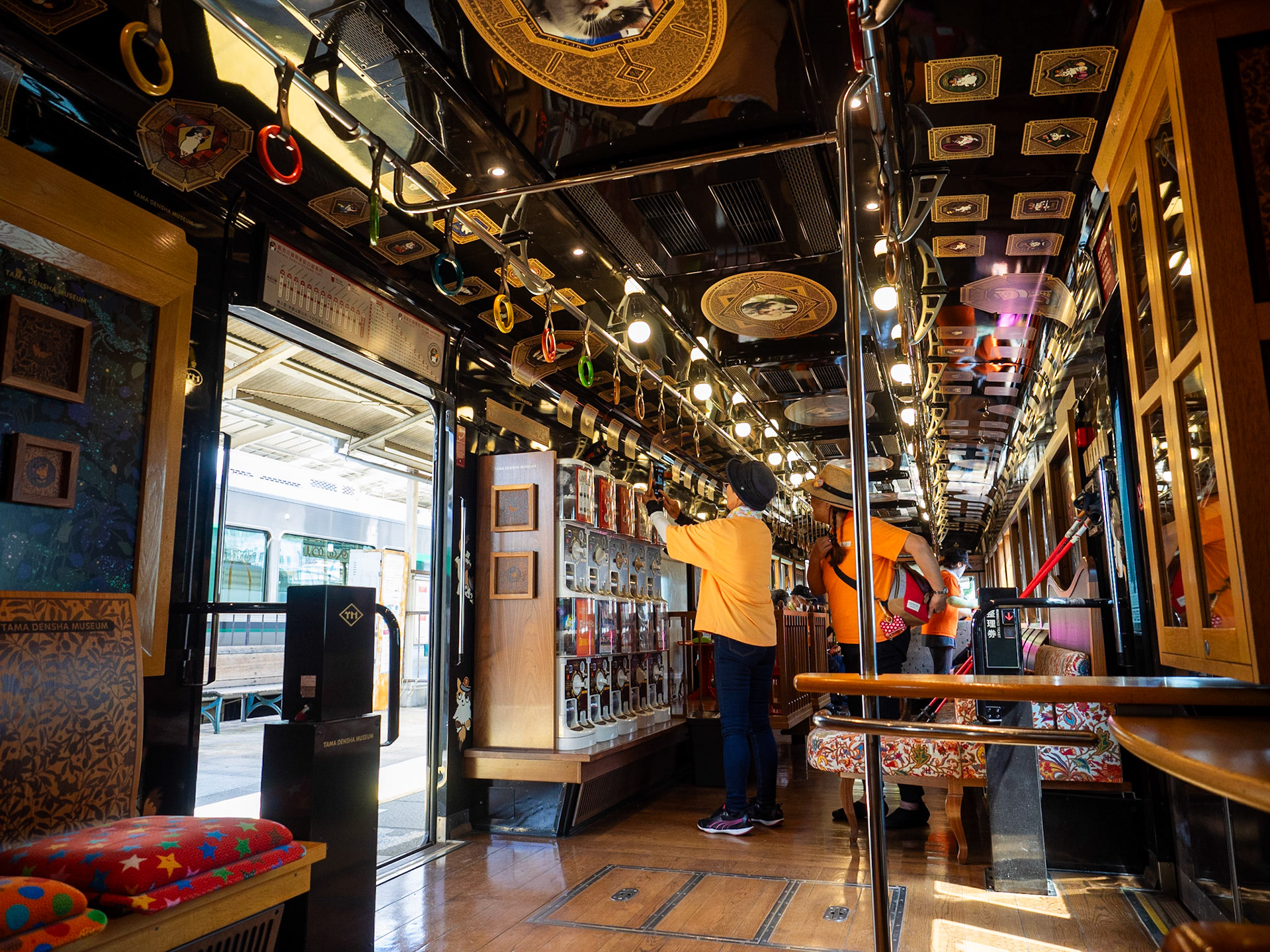
Tama Museum Train, Wakayama
Mount Koya
Mount Koya, or Koyasan, is one of the most sacred Buddhist sites in Japan. Perched on a mountain top east of Wakayama, and south of Osaka, it consists of numerous monasteries, and Japan's largest graveyard, all set amid towering cedar & spruce trees. Extremely popular as a Japanese pilgrimage site, the town is well set up for tourists, pilgrims, & day trippers.
Some of the highlights of Koyasan include Japan's largest Zen rock garden at Kongōbu-ji, the drum shaped edifice of Kongobu-ji Danjo Garan, and the extensive cemetery leading to the mausoleum of Kobo Daishi, founder of Shingon Buddhism. This 2 km walk is a must, and can be done as a sort of loop. As well as the atmospheric ancient graves, the mist, cloud & trees, keep an eye out in the early sections for the modern corporate memorials.
Most guides seem to recommend a long days train travel to get to Koyasan from Osaka. I say do as the locals do and drive. Assuming you're not actually undertaking the full pilgrim experience and spending days on the Kumano Kodo trail. The less common access road from the south of Koyasan, following the Arita River, is spectacularly scenic, crisscrossing rivers, streams, and passing through small mountain villages. A very fortunate byproduct of us getting lost, not having figured out Japanese GPS systems at that stage.
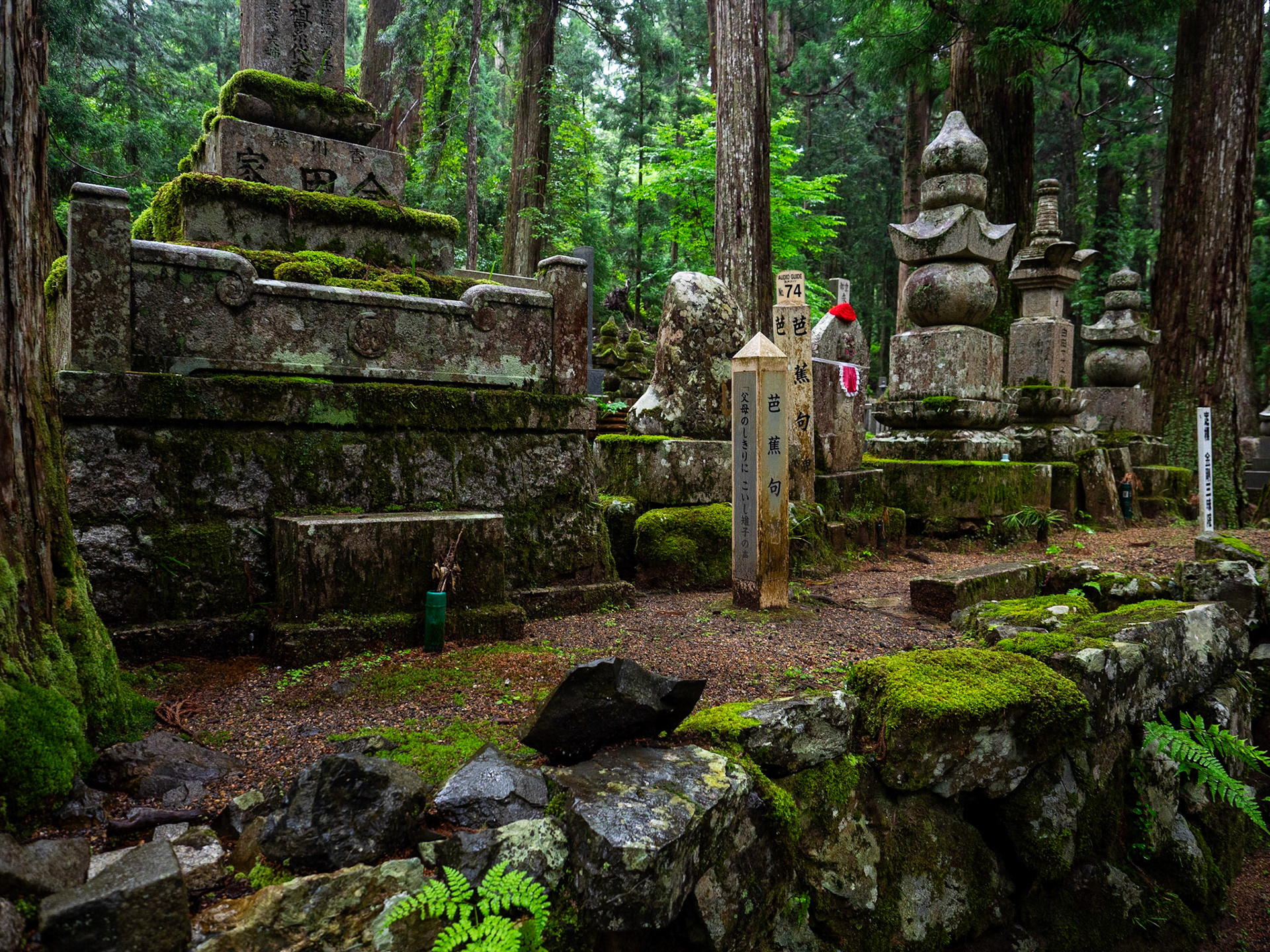
Koyasan
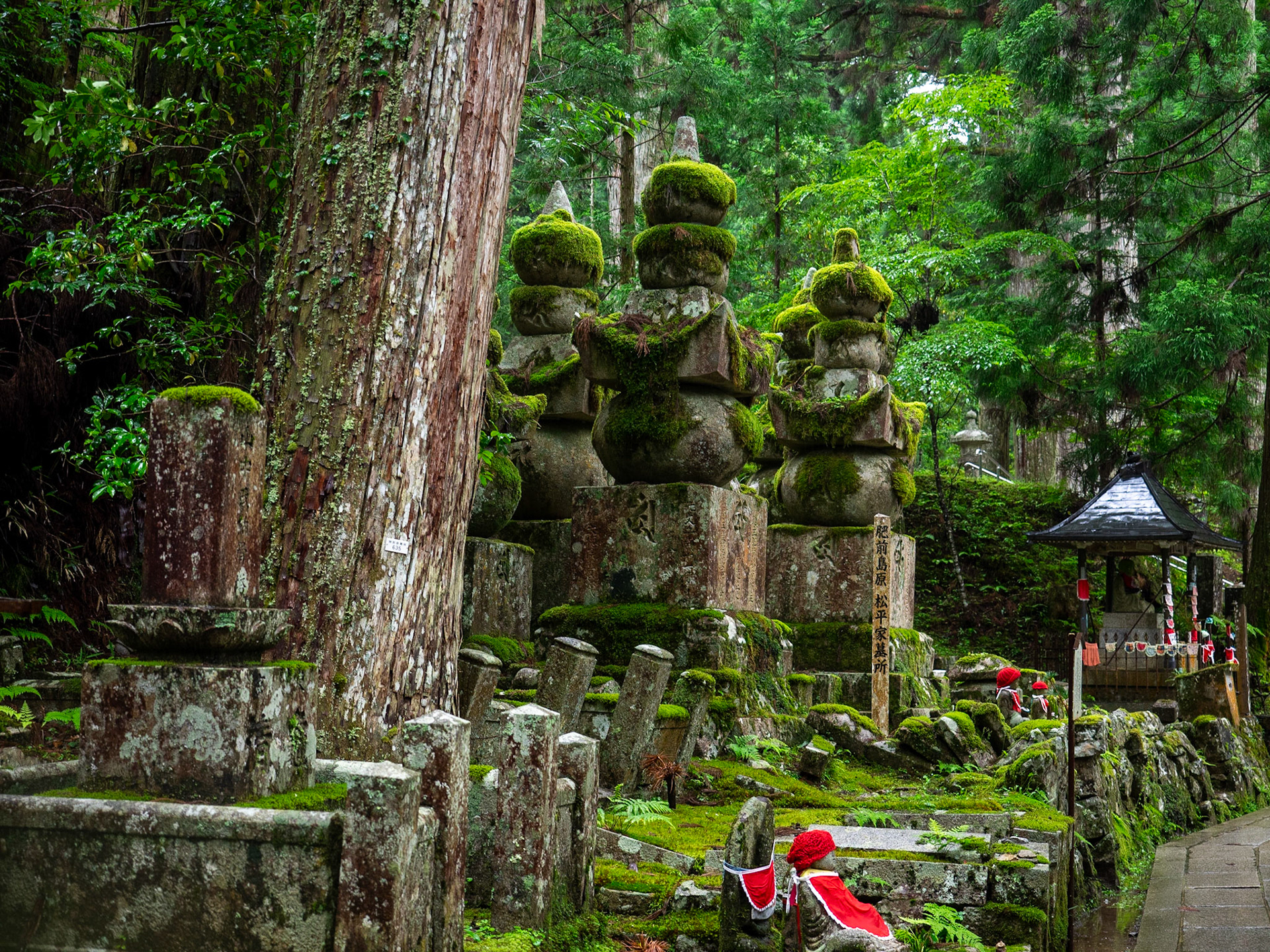
Koyasan
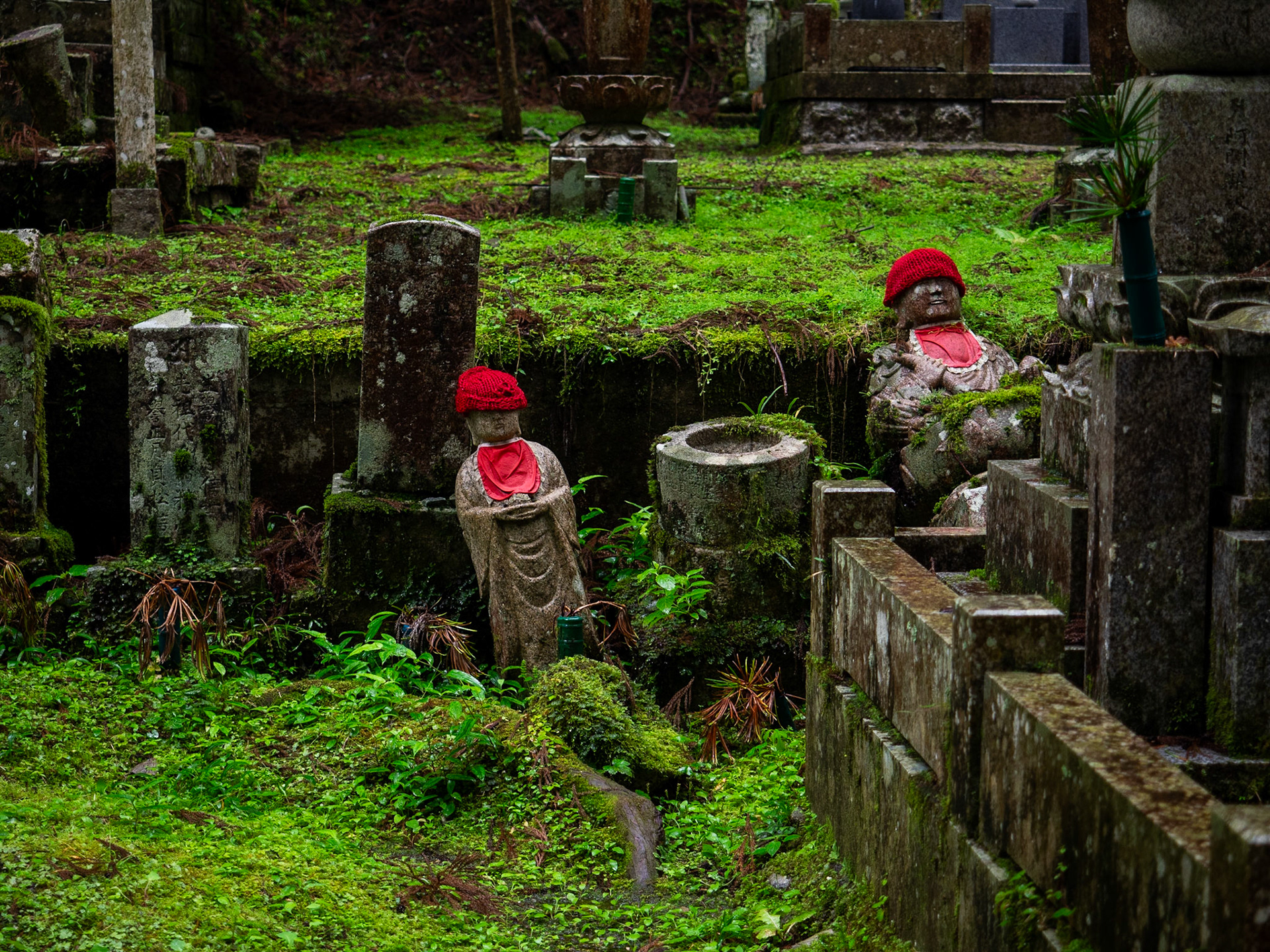
Koyasan

Kongōbu-ji, Koyasan
Nagoya
I'm going to include Nagoya in this write up. The fourth largest city in Japan, situated between Tokyo and Osaka, and often derided by Japanese as the most boring city in Japan, it deserves a stopover for three reasons.
Firstly is the excellent Tokugawa Art Museum, an extensive treasure trove of historical artifacts, presented in context & with worthwhile English explanations.
Secondly, Nagoya is the start or end point for catching Wide View trains up into the Central Alps to either Matsumoto or Takayama. Possibly Japan's most scenic long distance train trips either or both journeys are worth planning a trip around.
Thirdly would be to spend a night at the Tower Hotel Nagoya, if you can possibly afford it. Perched inside the structure of Nagoya's old iconic TV tower, this legitimately art themed hotel has probably Japan's best Japanese breakfast, indeed close to one of the best meals full stop we've eaten in three trips to Japan.
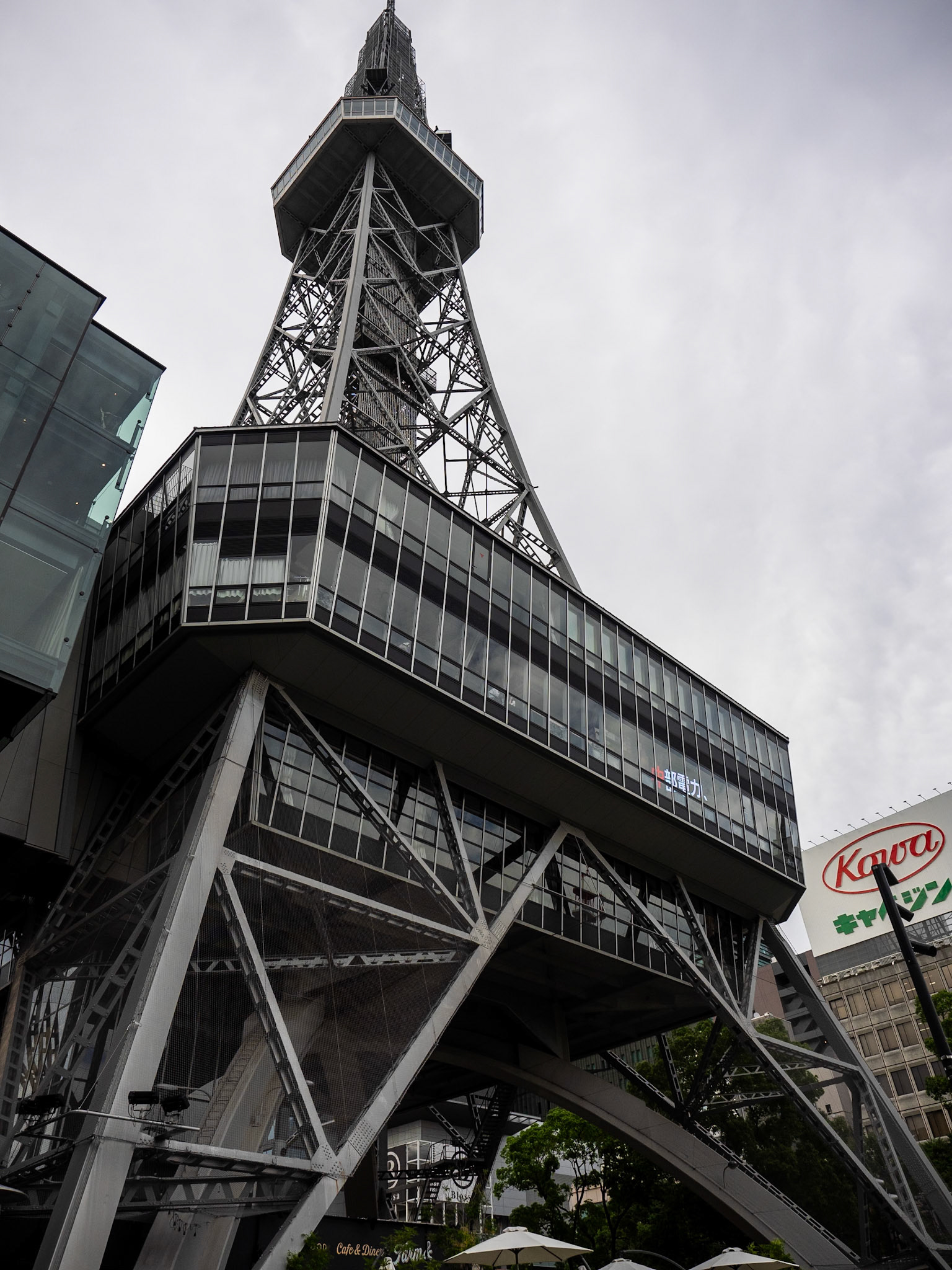
Nagoya TV Tower

Bus Station Nagoya
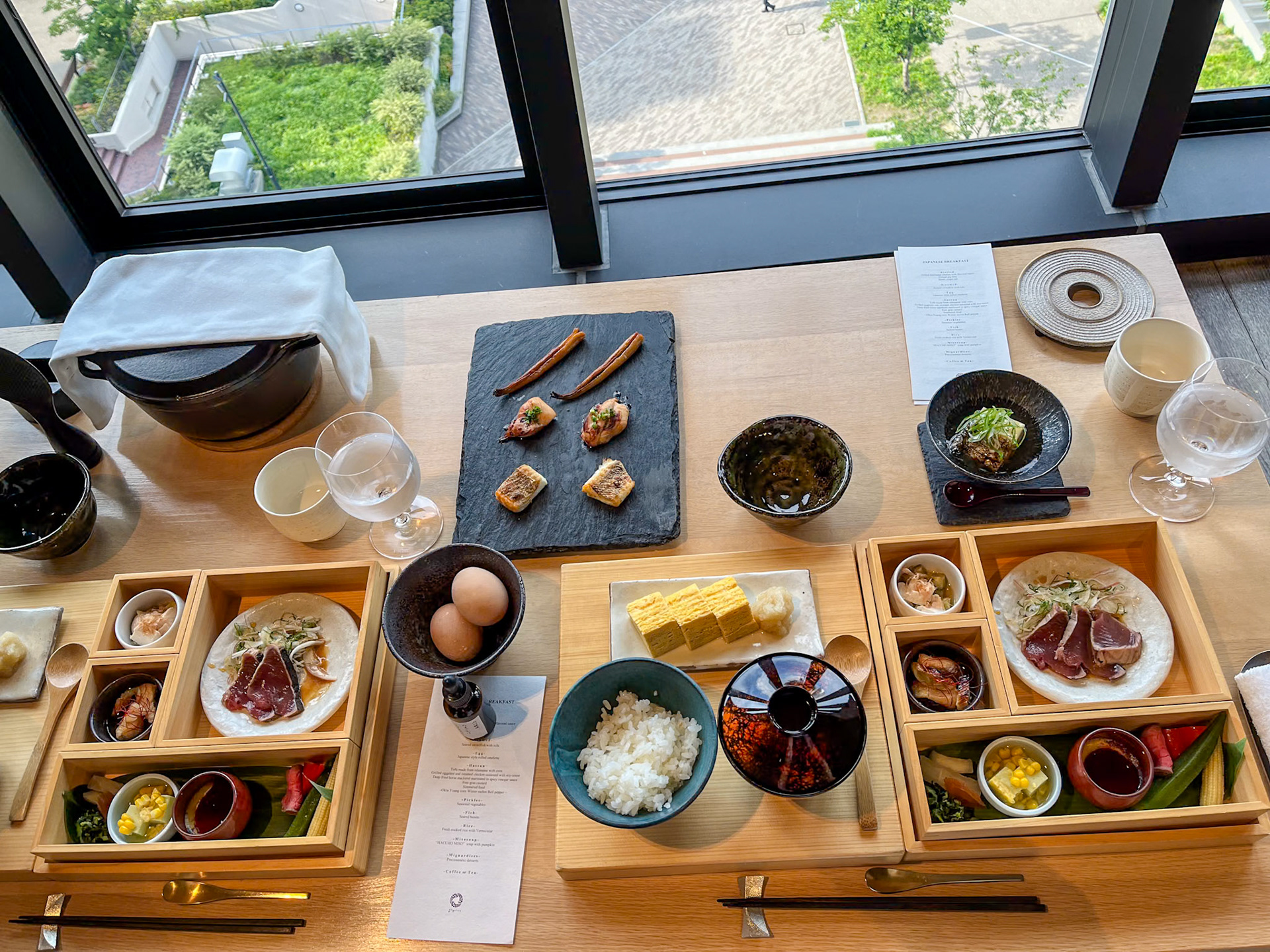
Breakfast, Tower Hotel Nagoya
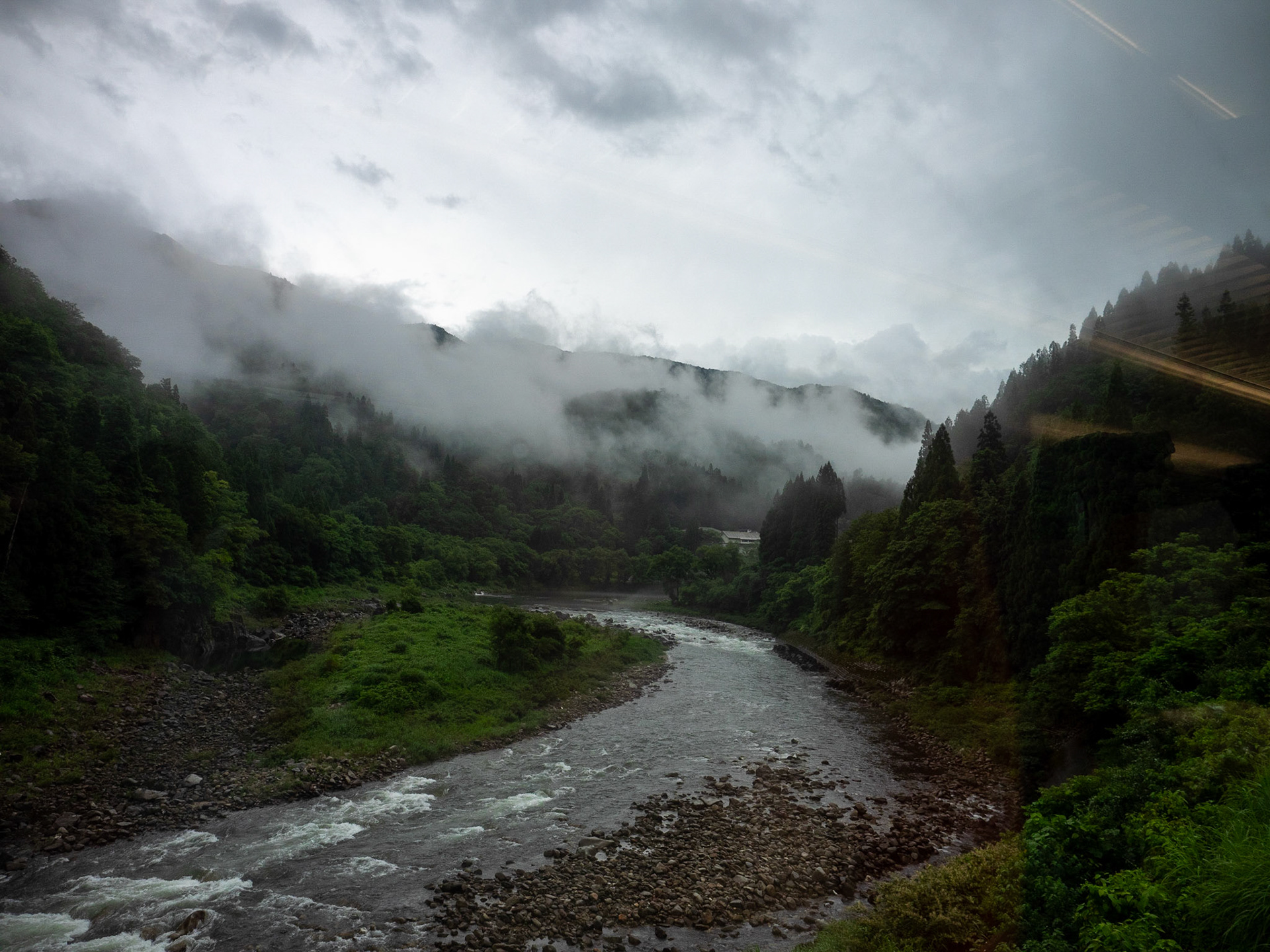
Train View near Takayama
Okayama, Himeji, & Naoshima
Okayama is a medium sized city, that makes a good break on journeys between Honshu & Kyushu, or as a stepping stone to Naoshima, or across to Matsue and the west coast.
It's a pleasant place, with most accommodation and eating within easy distance of the station, and a useful tram network for visiting a range of sights. These would include the renovated castle, with it's internal museum, and Koraku-en Gardens, reputedly one of Japan's top 3, though aesthetically I found them coming up short compared to quite a few others. It was in the choice of eating venues that I thought Okayama shone, with some top notch tempura & modern Japanese cuisine choices among others.
Outside of town, a short local train ride away, Kibitsu Jinja is a quite interesting Shinto shrine with a garden that is highly seasonal to be at it's best - peonies & hydrangea feature strongly along the with the usual maple trees.
Himeji, just up the shinkansen line towards Osaka, is another smallish, amiable city, with again pleasant, but seasonal, gardens around the famous castle. The City Museum of Art can have some interesting special exhibitions.
Naoshima
Famous as one of the 'Art Islands' in Japan's Inland Sea, Naoshima features highly as a supposed art destination. So should you go? Hmmmm would have to be my response - maybe.
Firstly, many people try and go as a day trip. Given the the time consuming, but not particularly difficult bus, train & ferry connections required to get there, this is really pushing it. On the other hand staying on Naoshima tends towards the very very expensive. And the scenery is excellent in parts, whereas the art itself is a very mixed bag. It should also be noted that transport around the island, even using reserved buses as well as public options, is quite time consuming - if you're trying to actually look at stuff it's a hassle to either rush to make a connection, or wait up to 45 minutes to get to the next site. And for those riding bicycles, the island is surprisingly hilly, with fair distances between venues.
Some thoughts on Naoshima as an art destination. Firstly, there are some excellent contemporary art works inside the Benesse House Museum. Being able to walk around undisturbed and appreciate them by virtue of actually staying at the Museum was wonderful.
Secondly there are some very interesting pieces and installations as part of the Art House Project in Honmura itself. All open via the purchase of a combined ticket from the Honmura Lounge & Archive. Looking at stuff, and walking around the small town is a full half day or more in itself.
On the other hand, the touted outdoor sculptures, dotted around the Benesse area, are pretty average. Instagram stuff, rather than any serious contemporary scuplture. And I include Yayoi Kusama's Pumpkins in this. Don't get me wrong. I've seen some outstanding artworks by her over the years, but these are not some of them.
As for the Chichu Art Museum, this is an over the top memorial to 'High Art' as a religious experience, housed in one of superstar architect Ando's concrete behemoths, that manages to remind me of Totalitarian architectural statements even more than usual. Add the reverential, but rigidly regimented staff, the repeated queuing, and of course the compulsory wearing of disposable slippers, before you are even permitted into the presence of some of Monet's 'Water Lily' paintings....
Which, by the way, are quite poor examples of this great series.
I did meet people who loved this experience. As an artist, and someone who trained during a time that rejected the commodification & glorification of High Art, this just really, really grated.
So in summary. I wouldn't call Naoshima essential. If you're only into Insta, go for a day, photograph a pumpkin, & you'll be happy. If you're more deeply into art, then pick & choose selectively what you spend your time on.
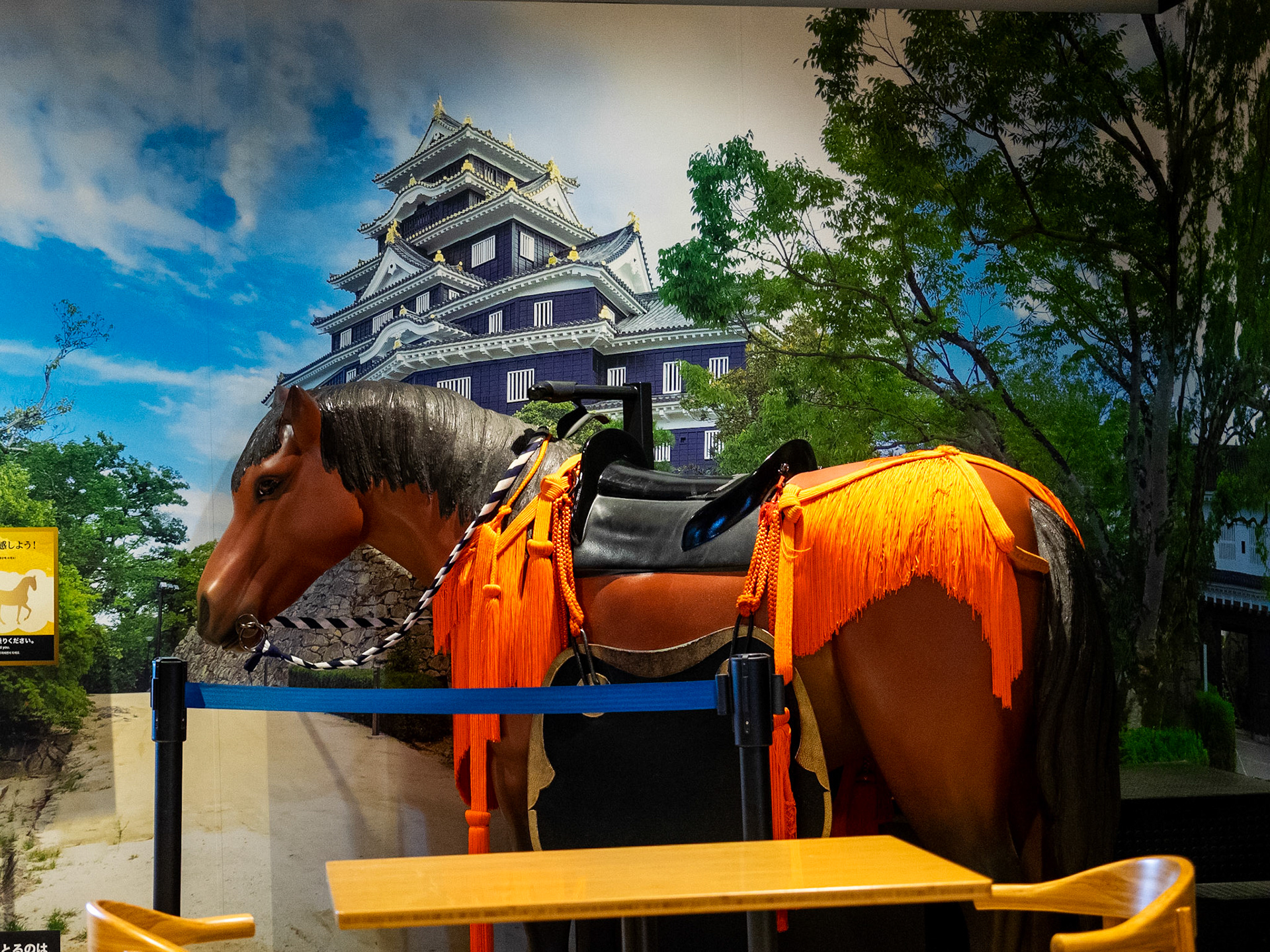
Okayama Castle
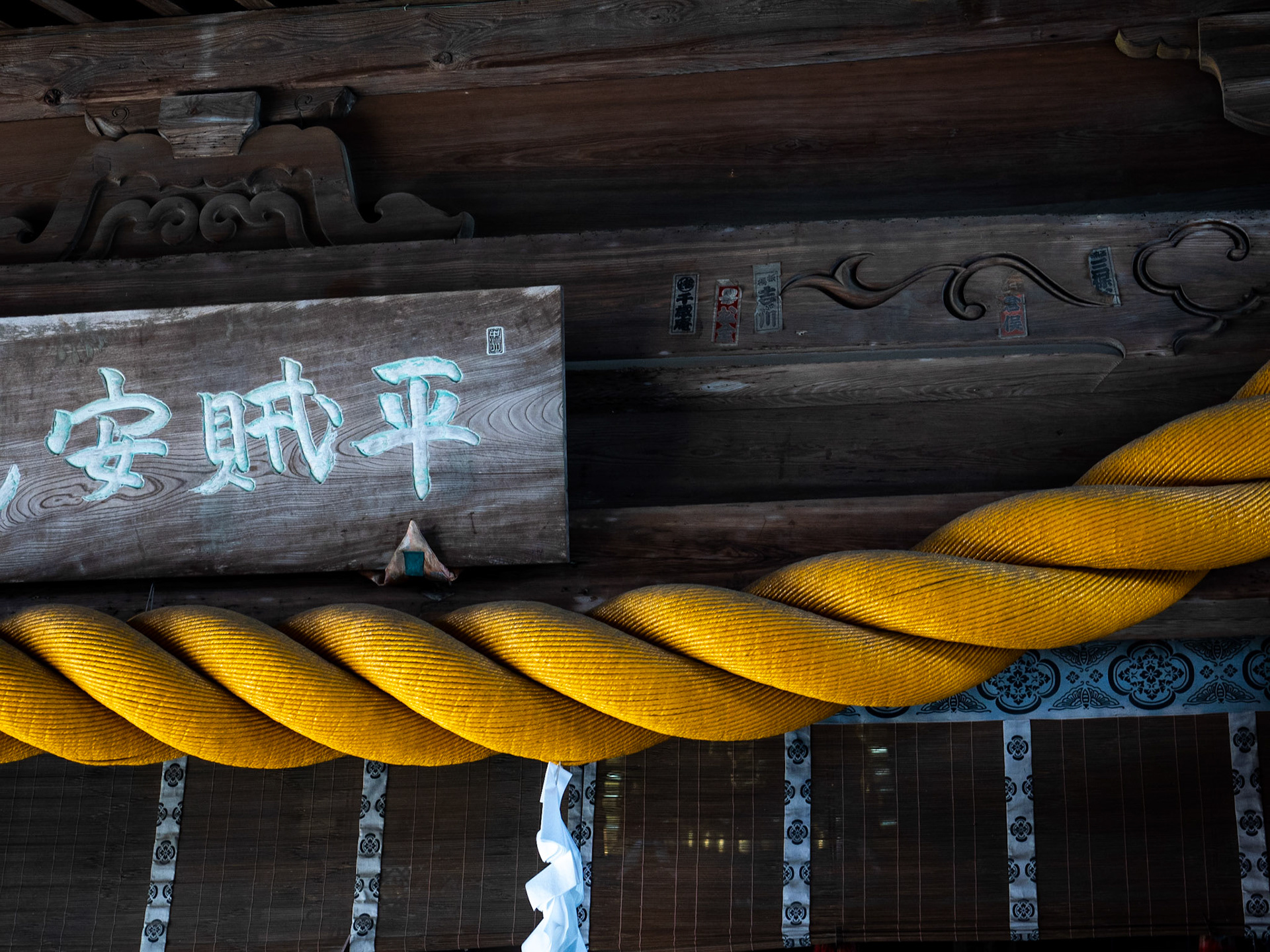
Kibitsu Jinja, Okayama

Kibitsu Jinja, Okayama
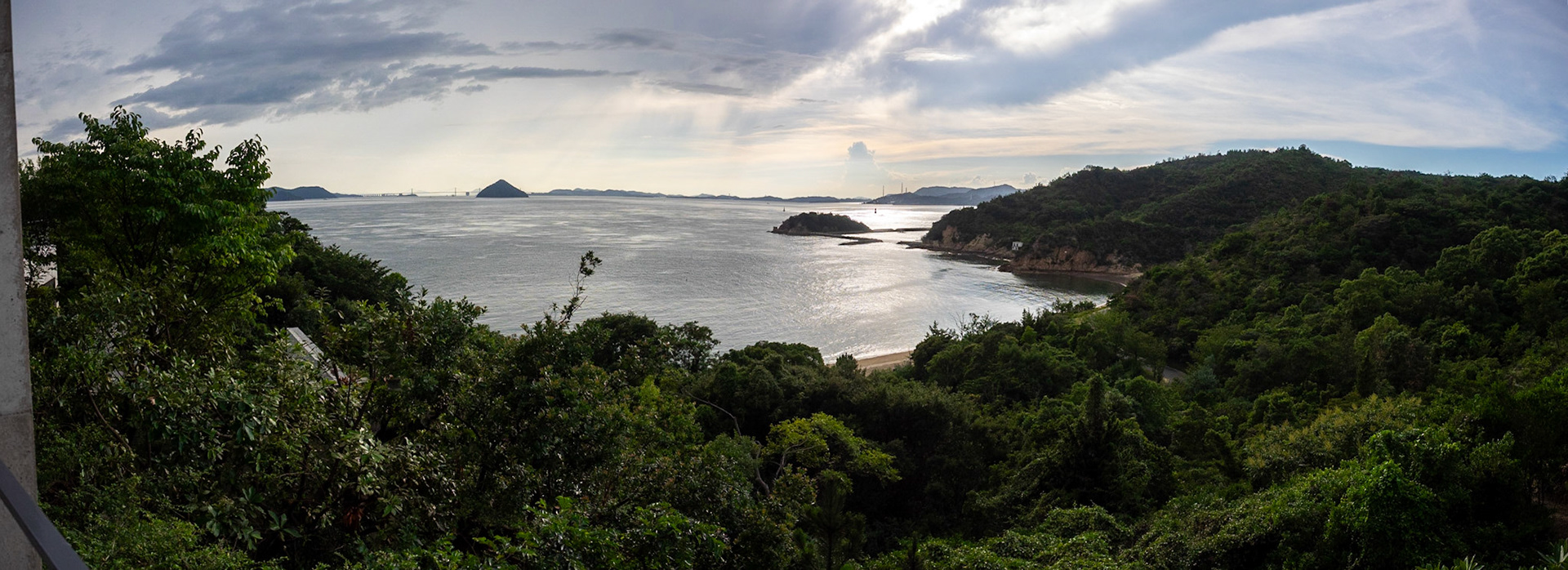
Naoshima
Tomonoura & the Inland Sea
Tomonoura is a small traditional fishing town on the coast of Honshu, facing the Inland Sea, east of Hiroshima. Full of small temples & streets & laneways lined with traditional houses, and businesses selling medicinal alcohol, it's a popular day visit for many Japanese, but very quiet once they've left. A real bonus is that there are a number of these houses & shops that have been converted into very pleasant places to stay. Indeed, this whole area, facing the Inland Sea is dotted with highly respected ryokans & onsens, many of whom also pride themselves on the quality of their food, particularly seafood. The downside is that all this tourist infrastructure is still aimed firmly at the domestic tourist market, so it can take a bit of internet research to come across them & make bookings.
It is the views, the peace & quiet, and a multitude of smaller sights, often walkable or a short car or taxi drive away, that make this area a very attractive one, rather than any one great place. Having said that, in the vicinity of Tomonoura are the Shinshoji Zen Museum and Gardens, another Japanese industrialists vanity project, consisting of extensive hilly traditional gardens, and historic relocated temple buildings & gates, plus some stunning modern structures. Well worth a stop, even if they were very surprised to see non Japanese visitors.
A short distance along the coast towards Hiroshima is the small city of Onomichi. Another place worth a visit, Onomichi is undergoing a bit of a tourist boom thanks to it's position at one end of the road & cycling bridges crossing the Inland Sea to Shikoku. Catching the chair lift uphill and walking down past numerous temples is a worthwhile, albeit very hilly, activity.
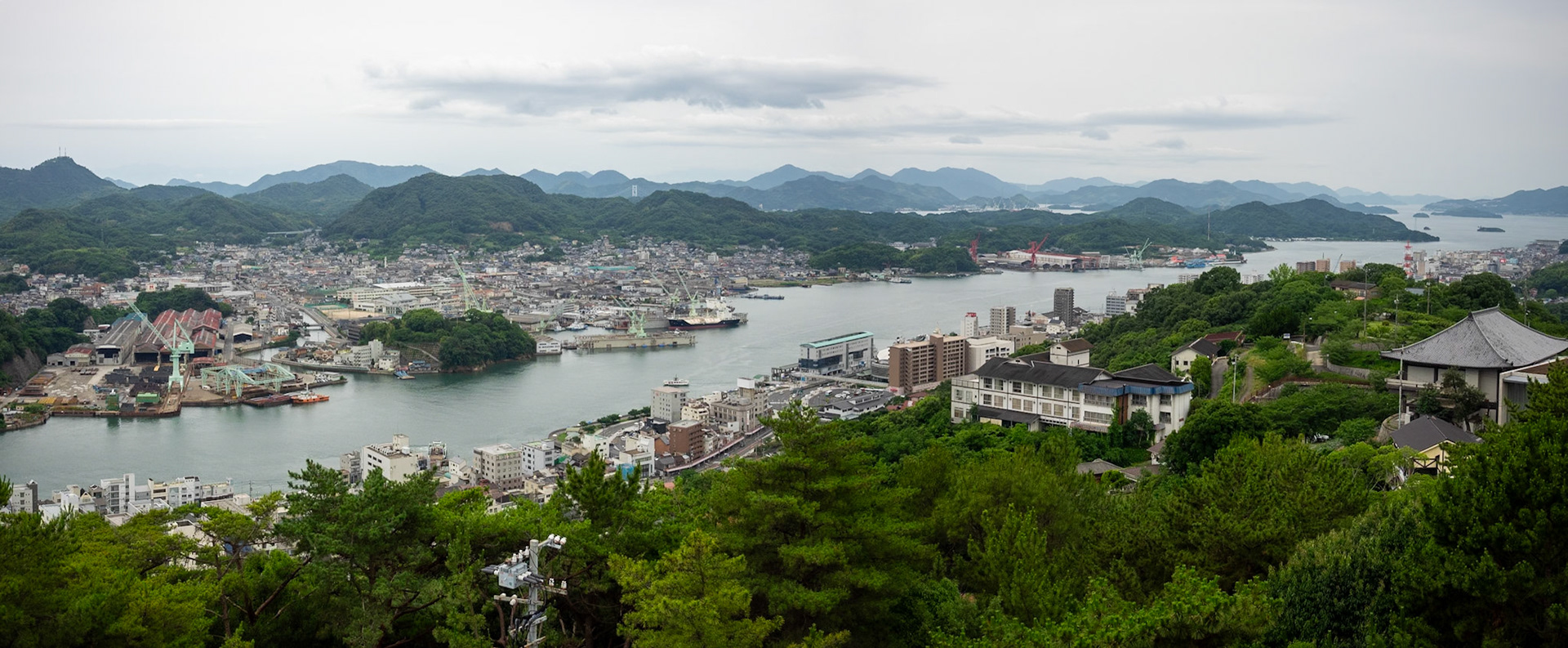
Onomichi
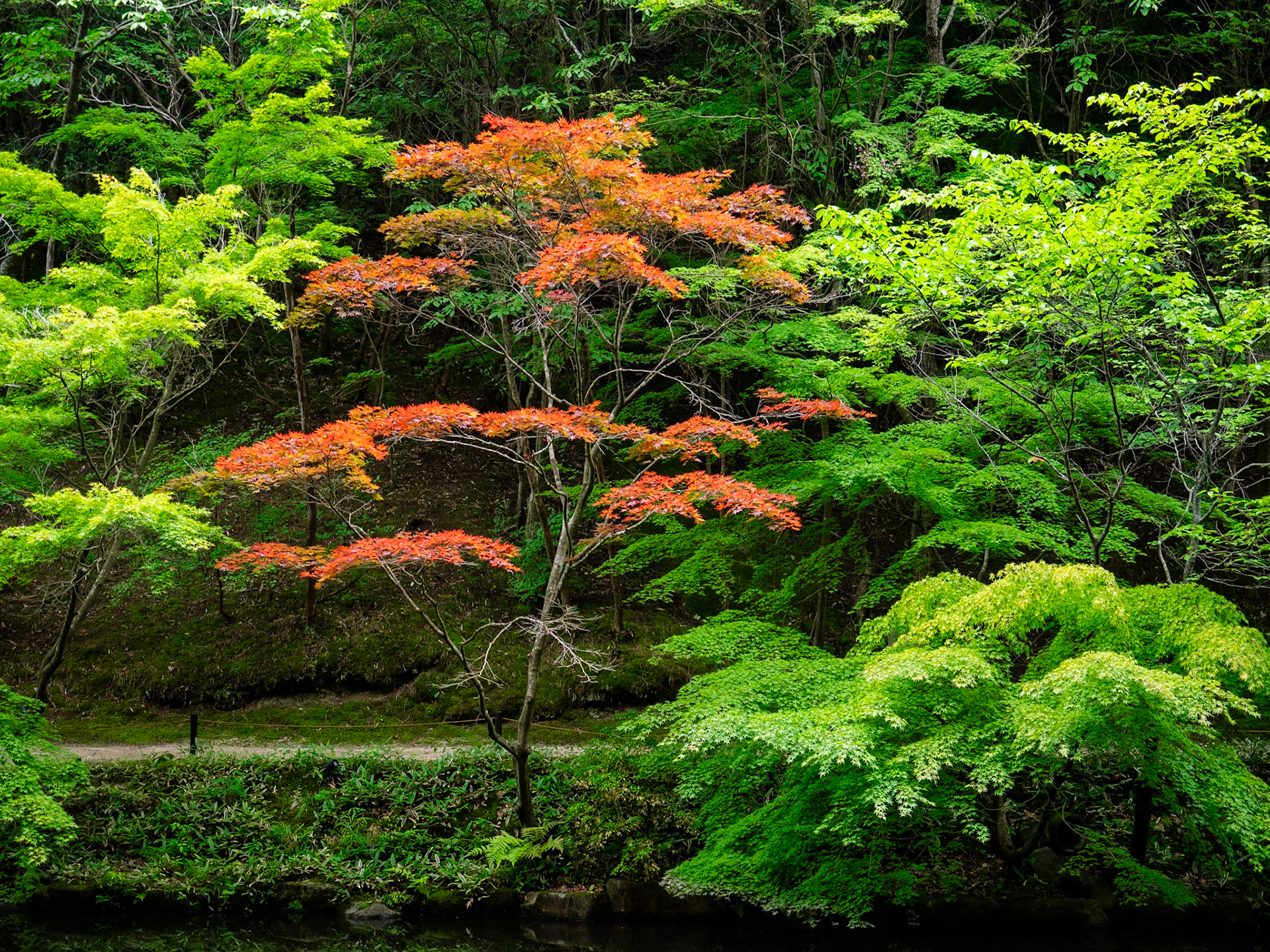
Shinshoji Zen Museum and Gardens
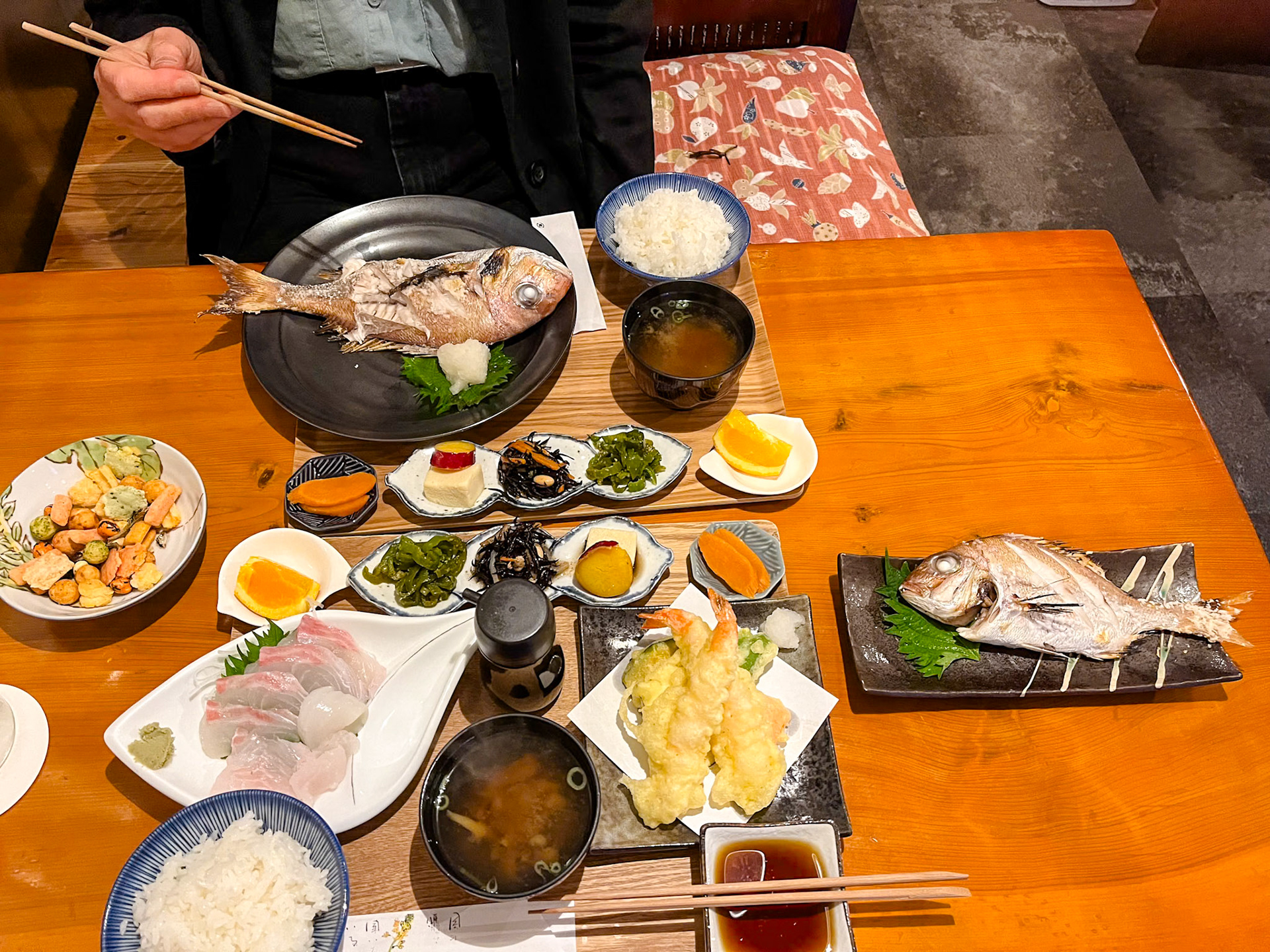
Tomonoura Izakaya
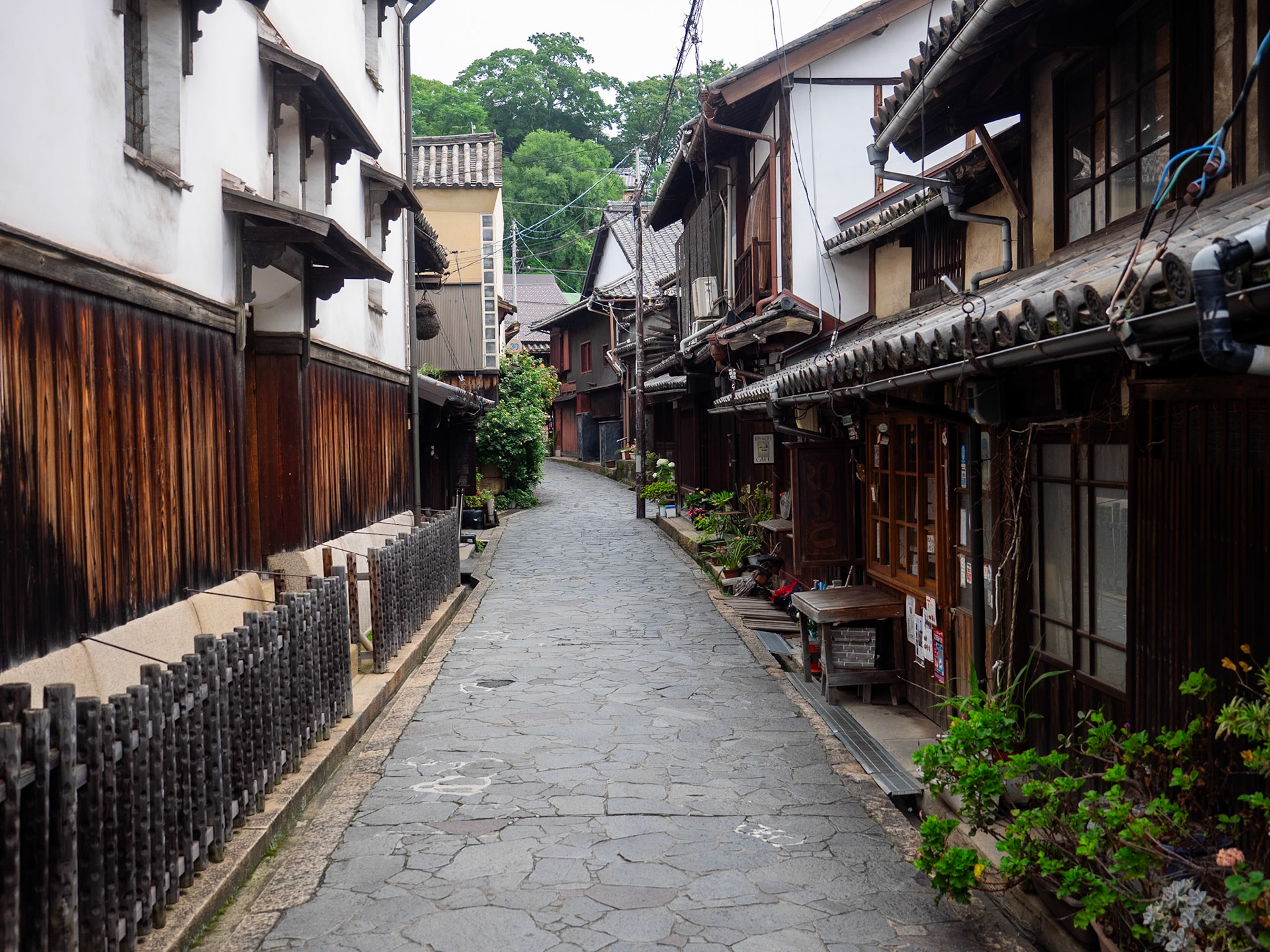
Tomonoura
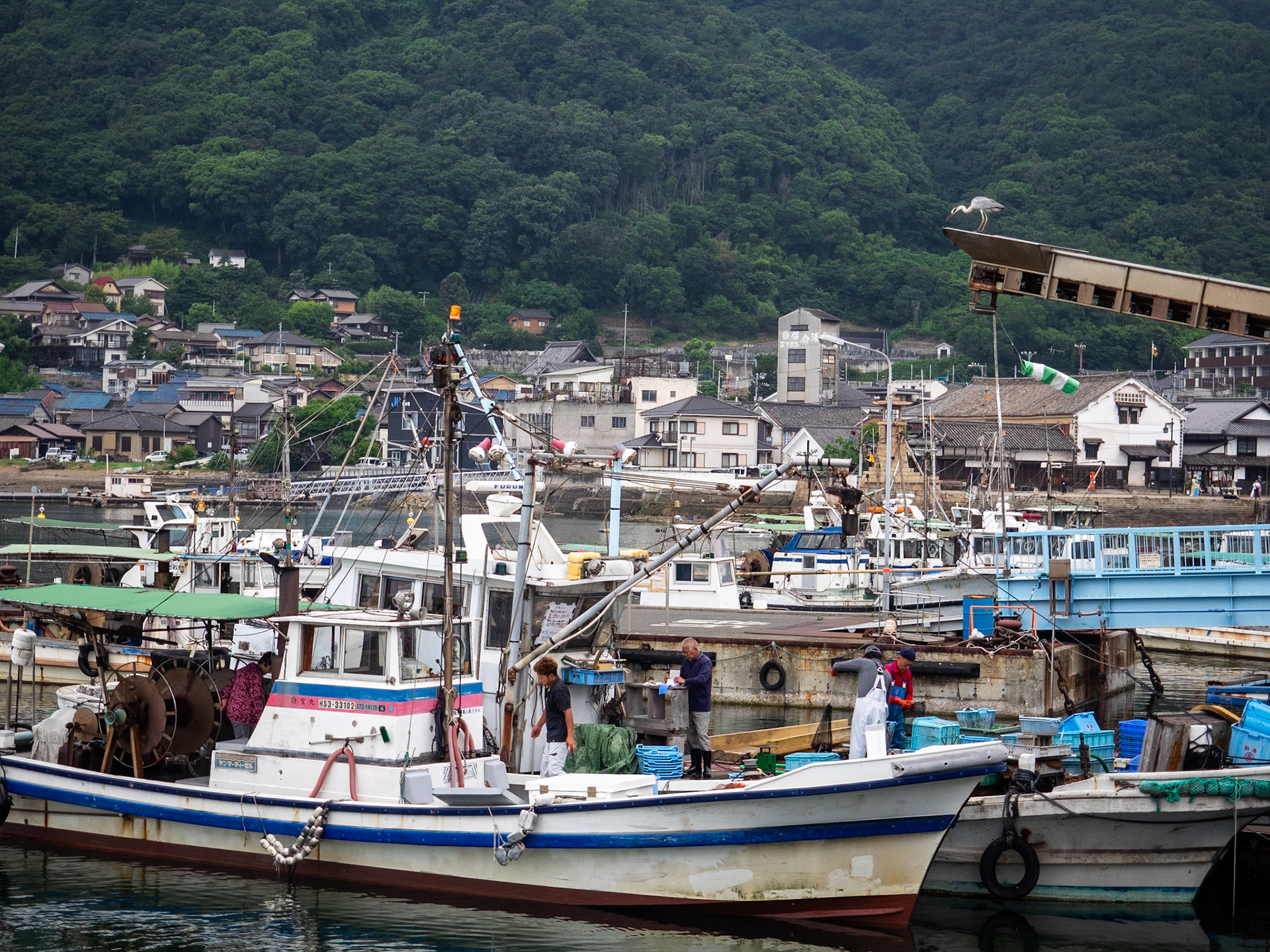
Tomonoura
Islands of the Inland Sea
The bridges across the Inland Sea between Onomichi and Shikoku cross a bunch of islands. These are a case of best seen as slow travel, by car or bicycle, and getting off the bridge expressway for an explore of an overnight stop. Heading towards Shikoku, the small town of Setoda is worth a wander, including the Kousanji Temple, an over the top modern extravaganza with an obvious Chinese heritage, and an underground grotto taking you through Buddhist hells. The next island along, Omishima, contains the revered Oyamazumi Shrine, notable for it's ancient trees, and the very traditional conjunction of a sumo ring & rice field. A few islands further along is the Kirosan Observatory Park, with spectacular views of the bridges, islands & Inland Sea. Note the steep & winding road up to this viewpoint is one for exceptionally fit cyclists only. Or drive.
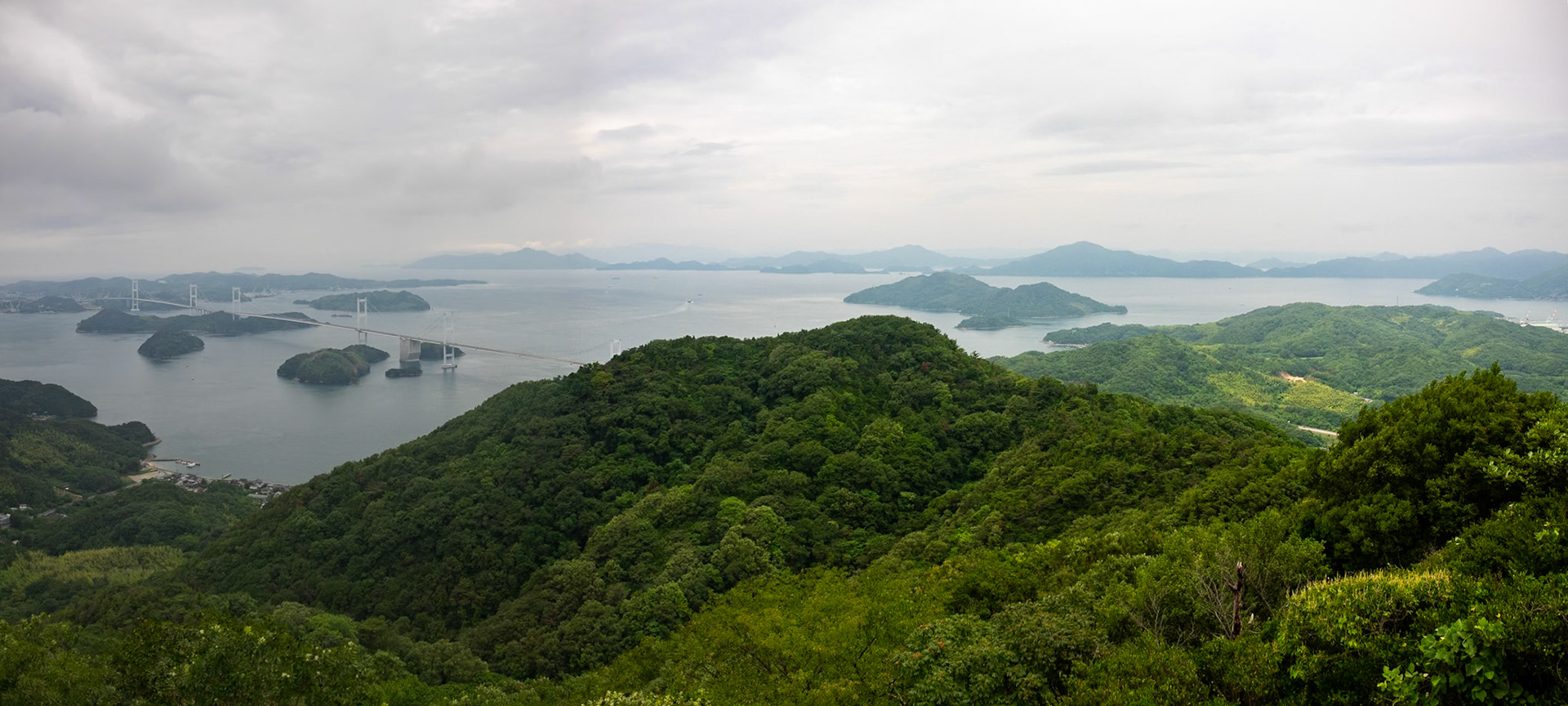
View of Kurushima Strait

Oyamazumi Shrine, Omishima
